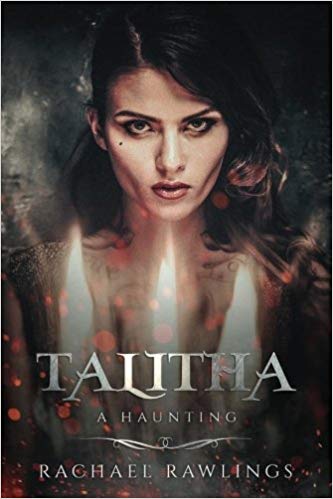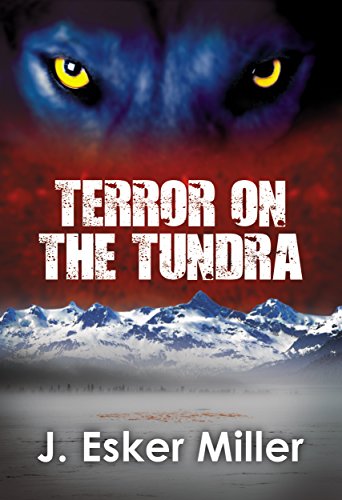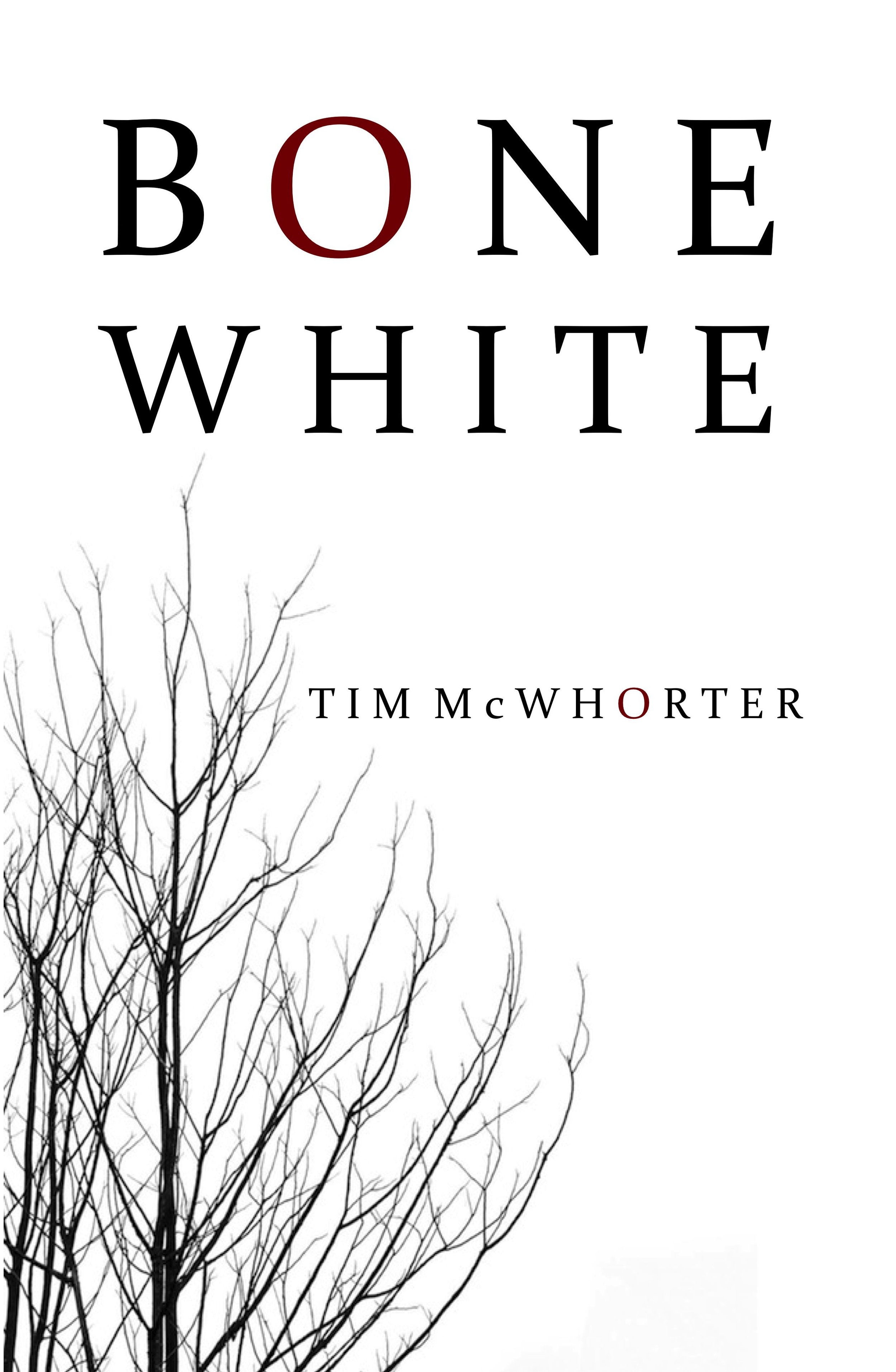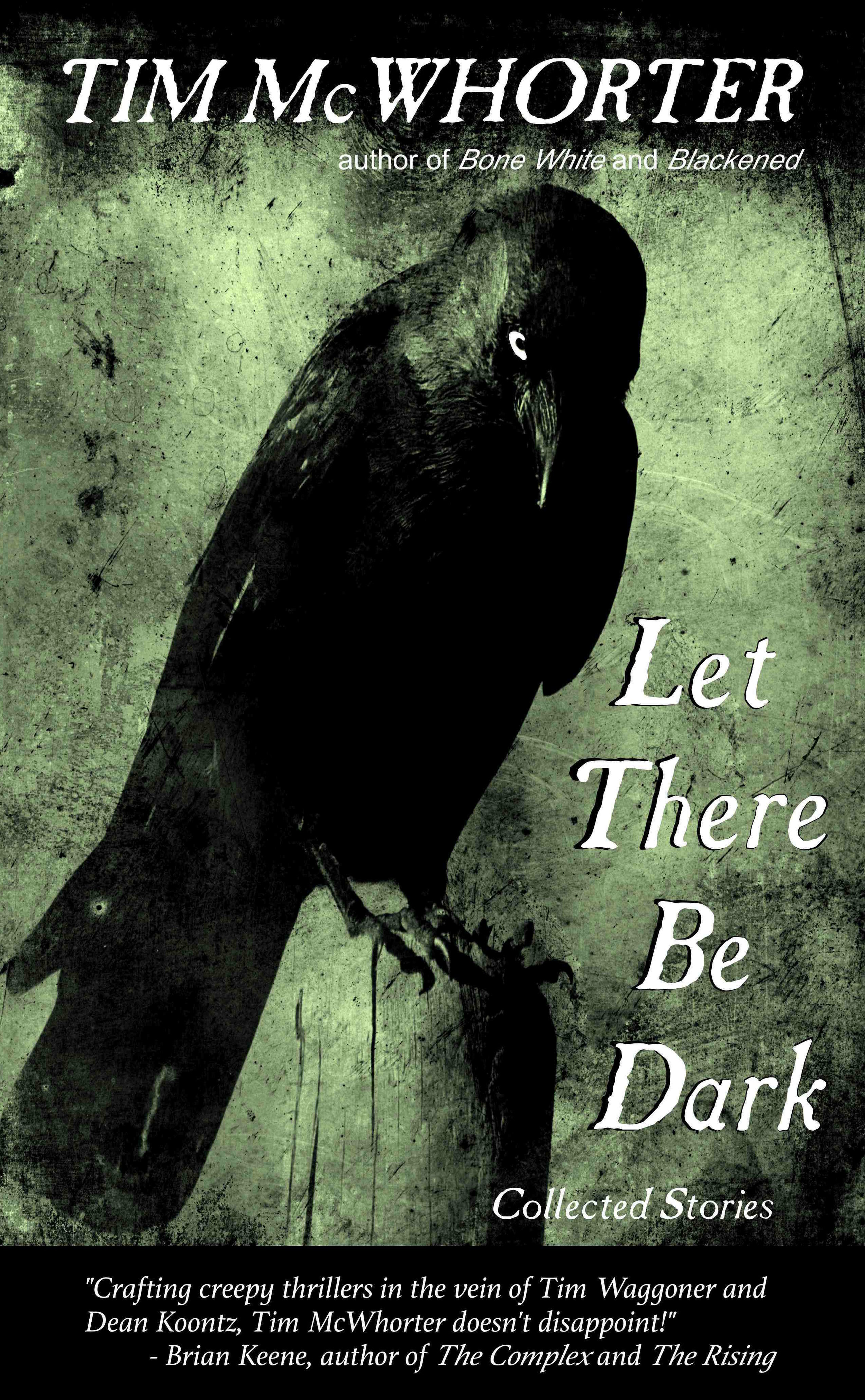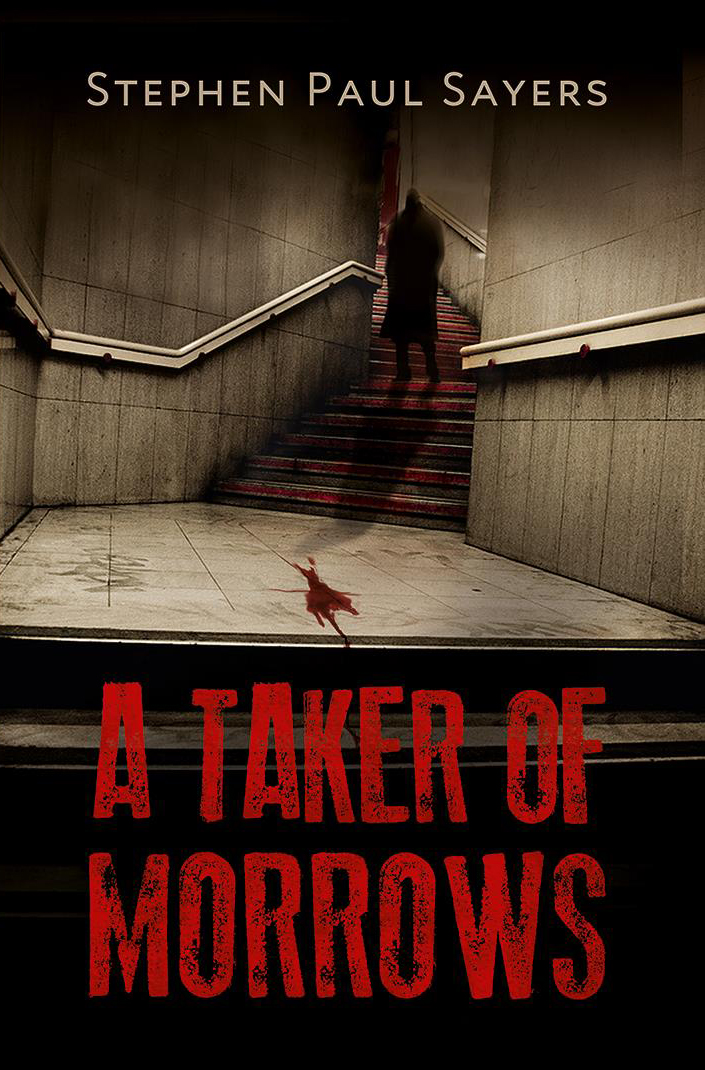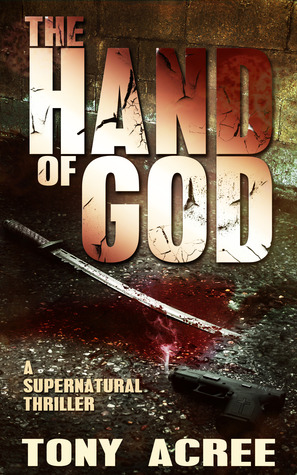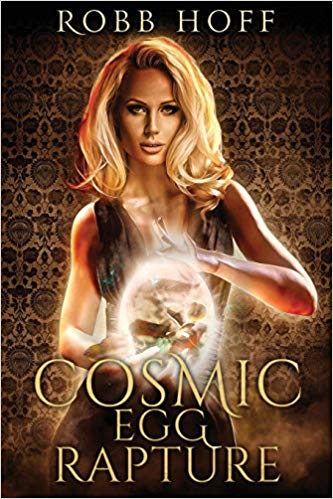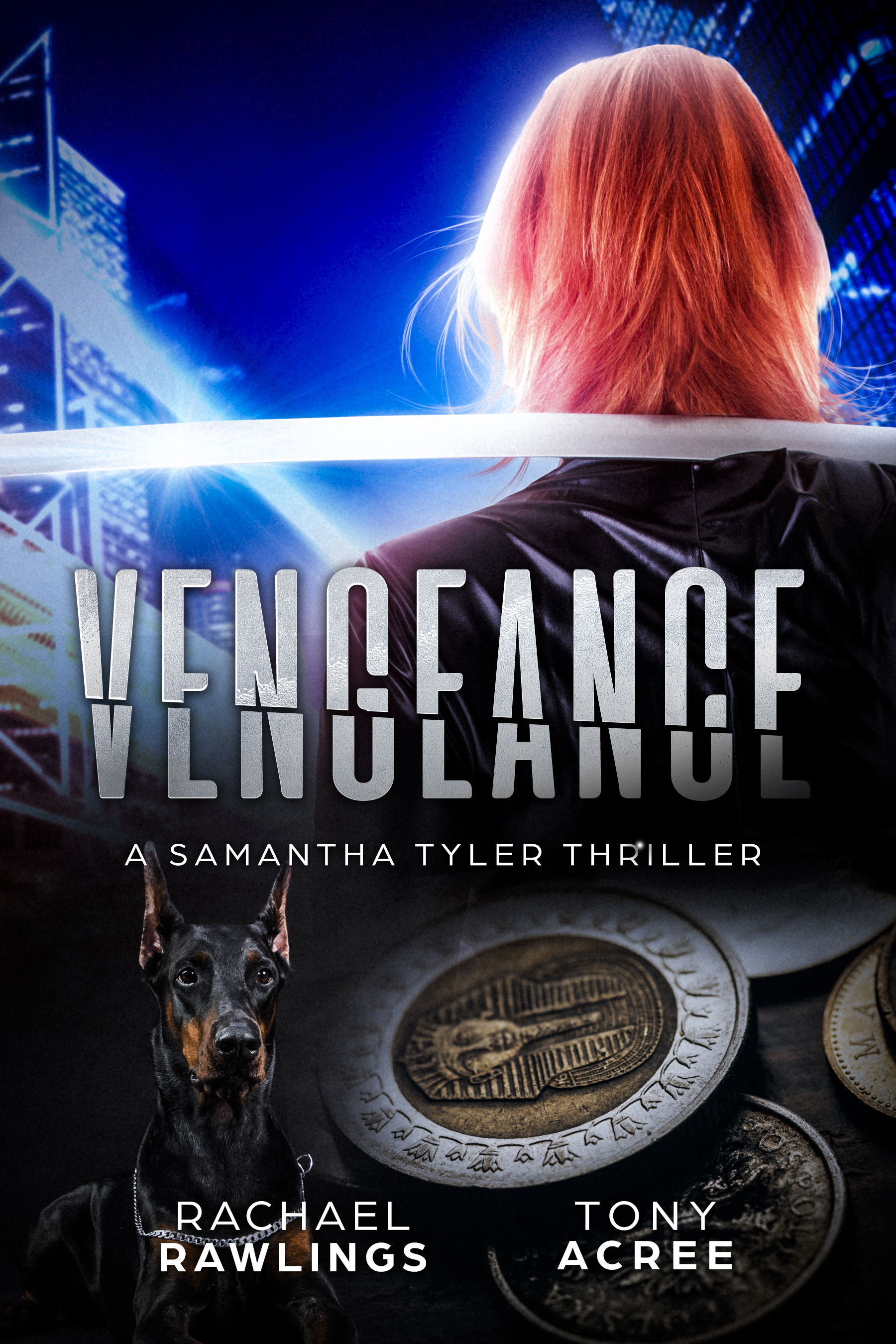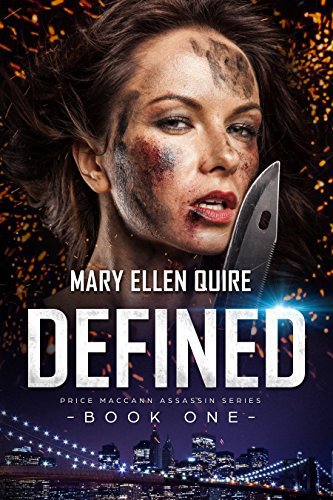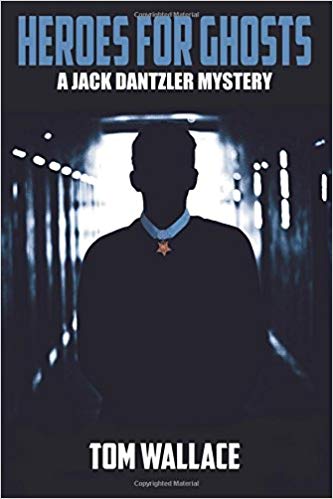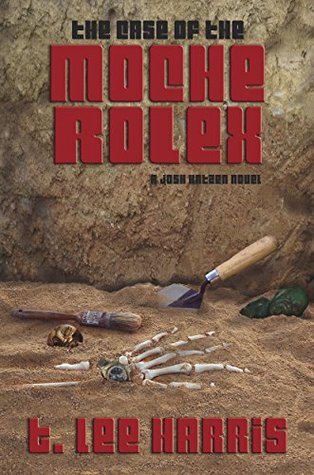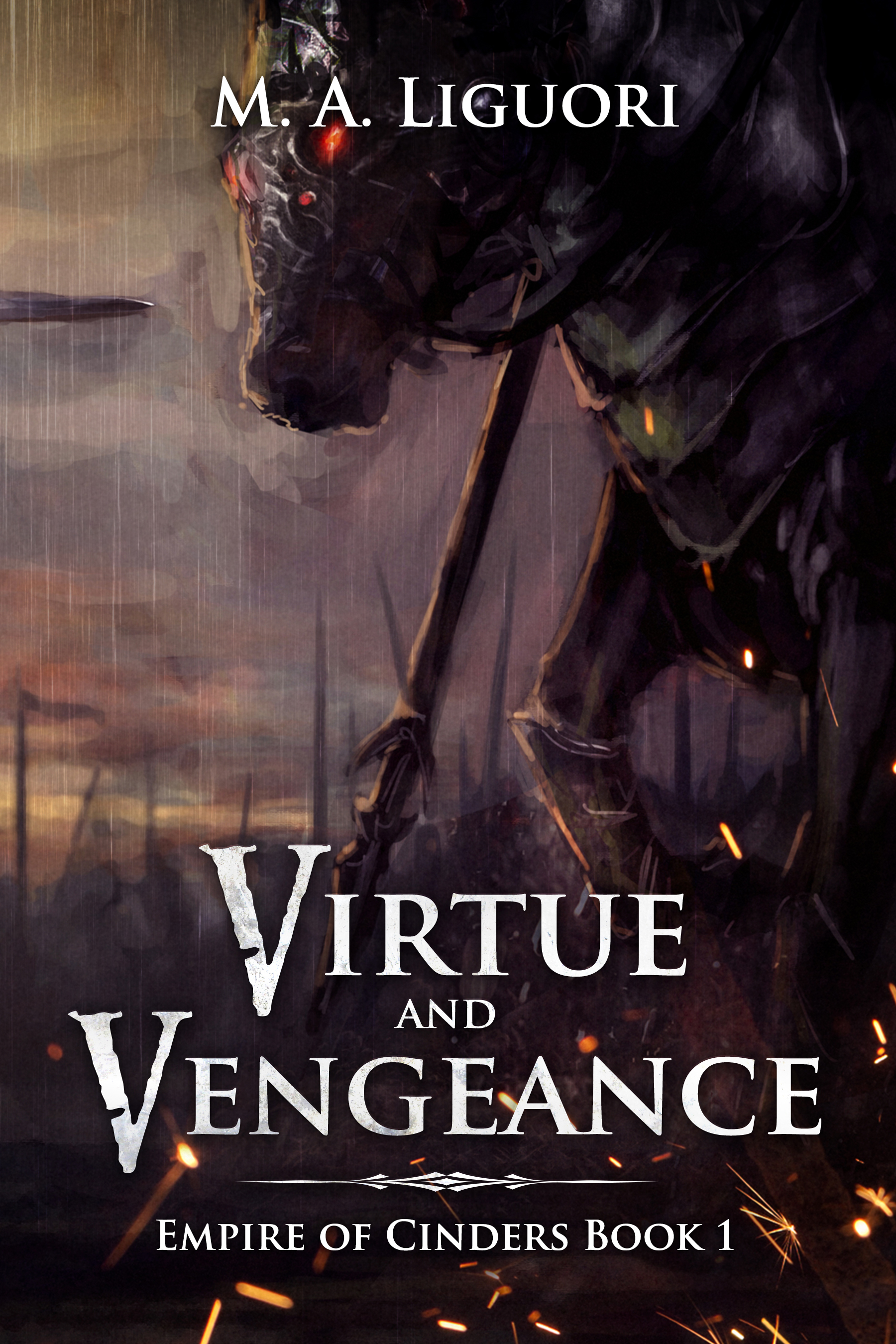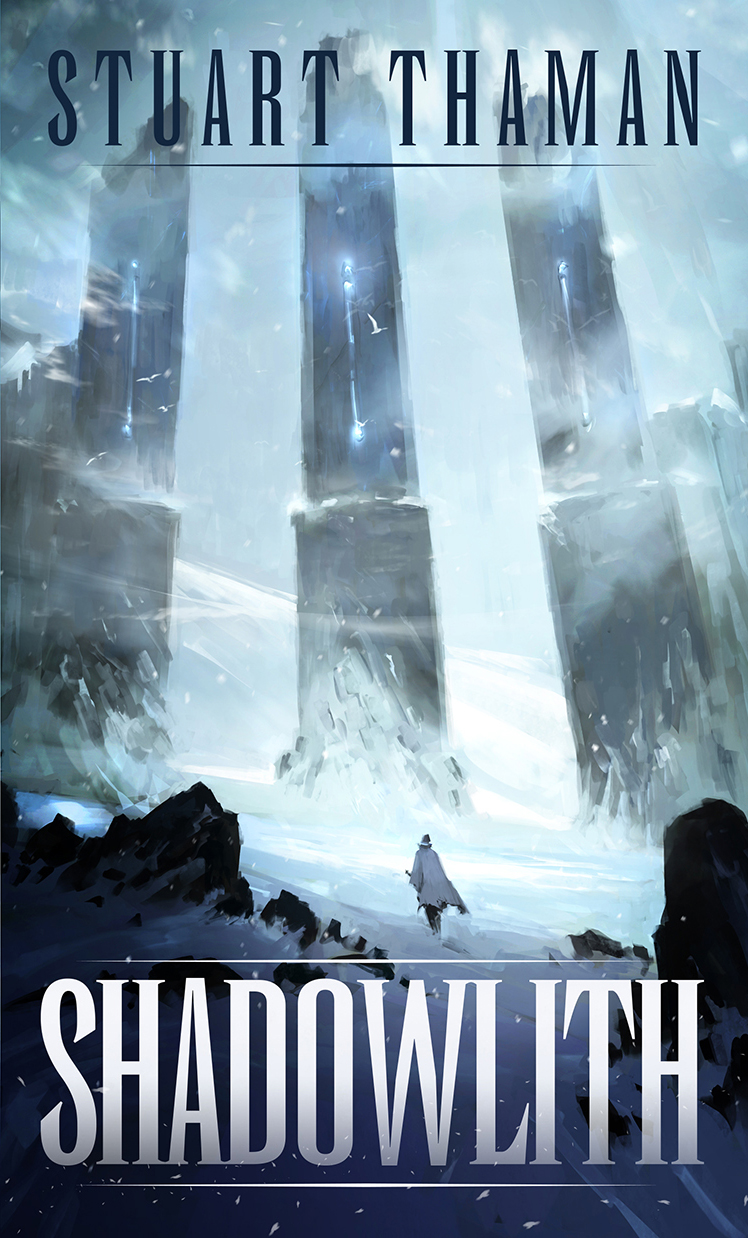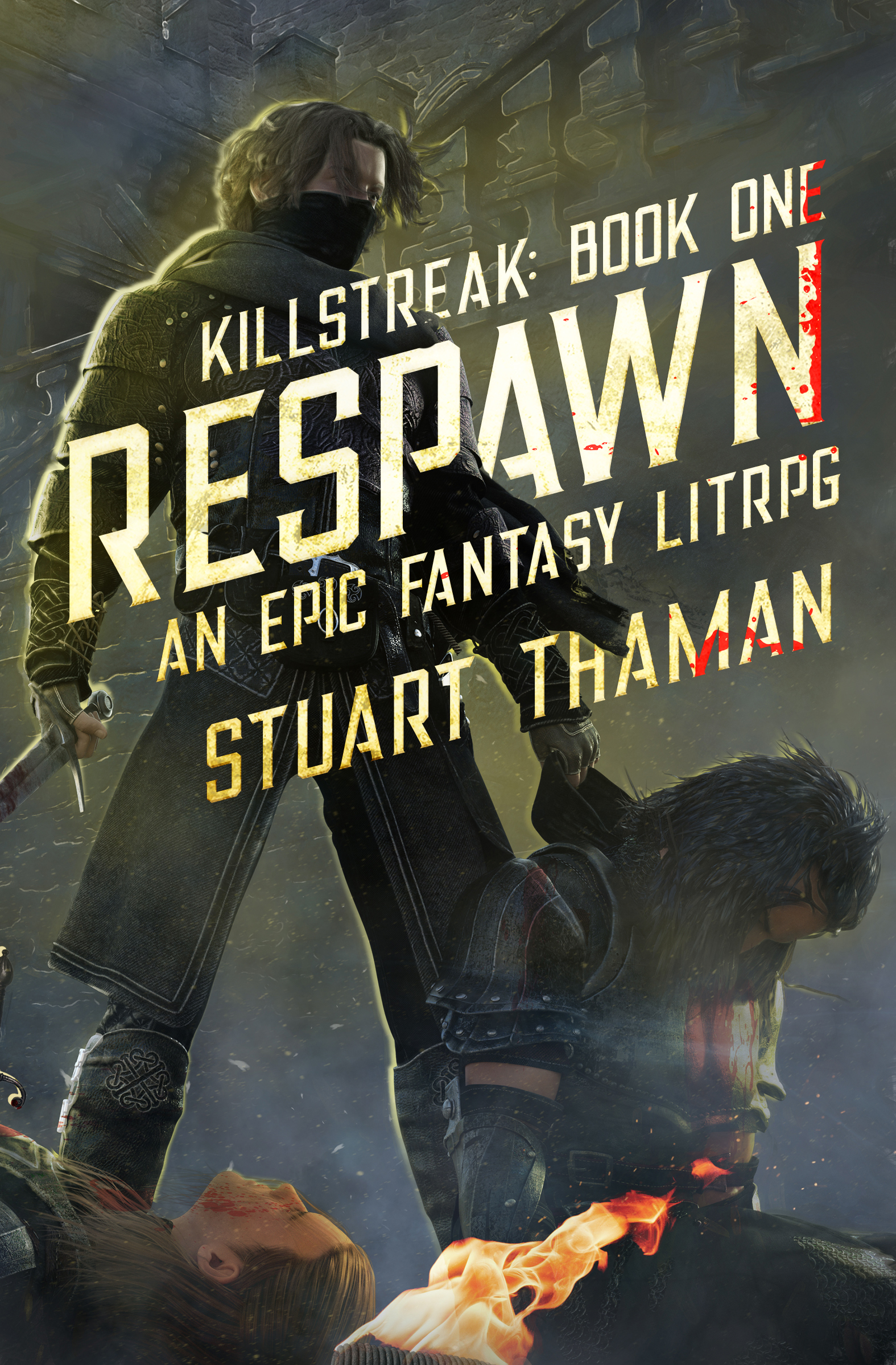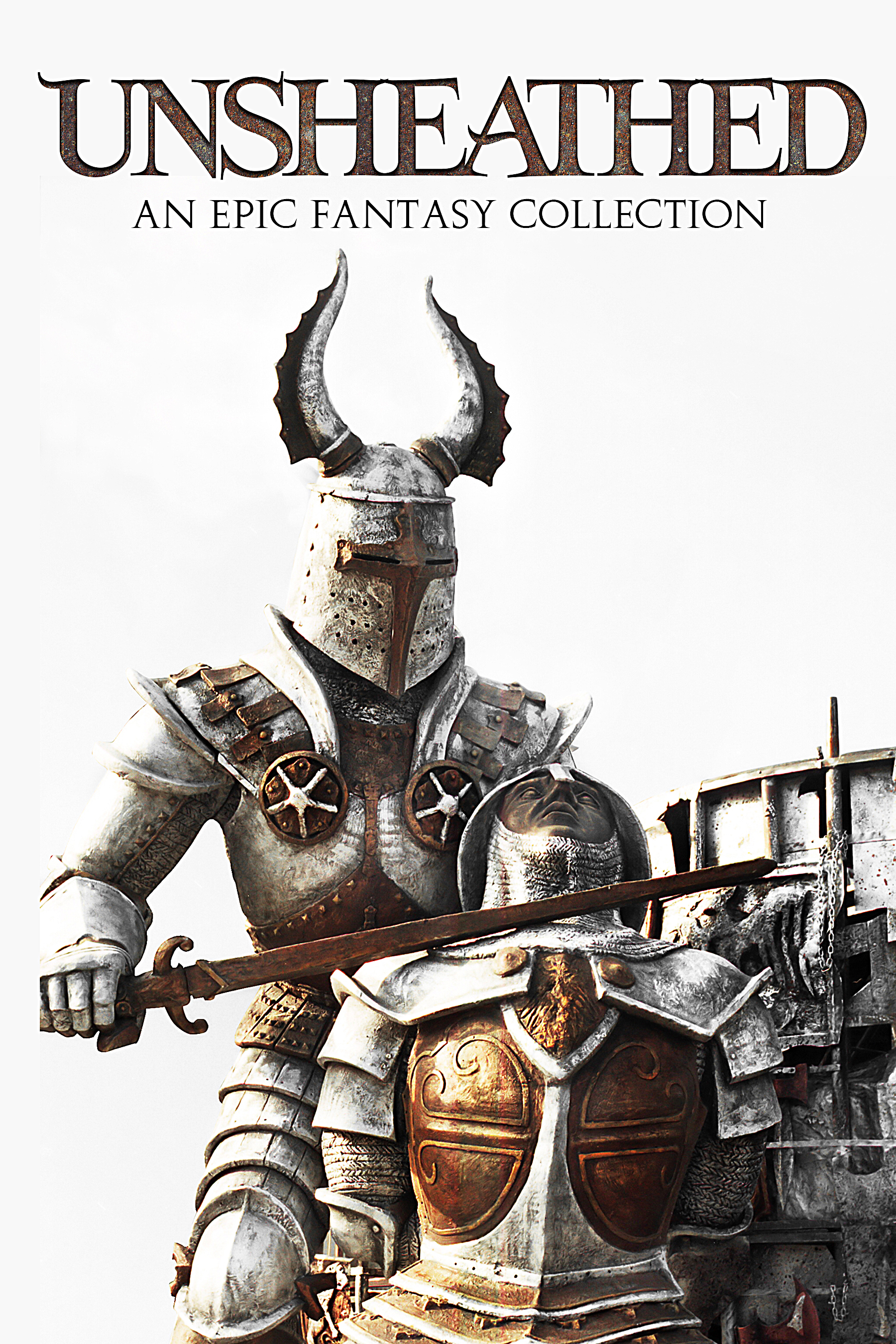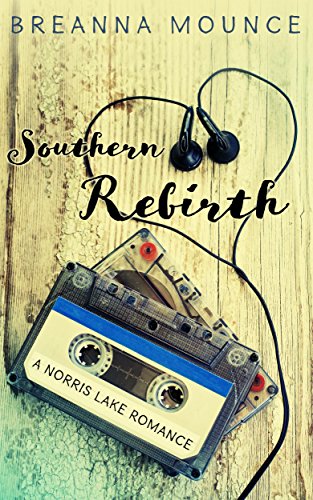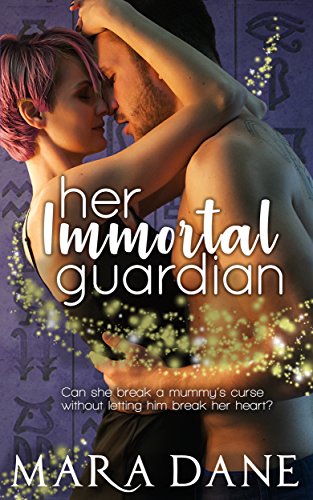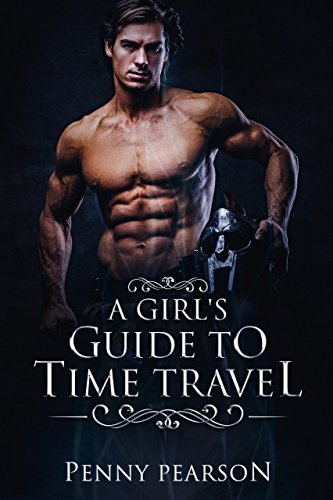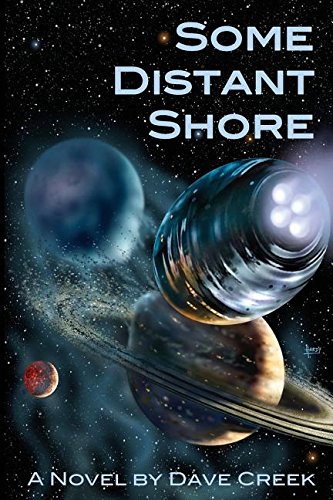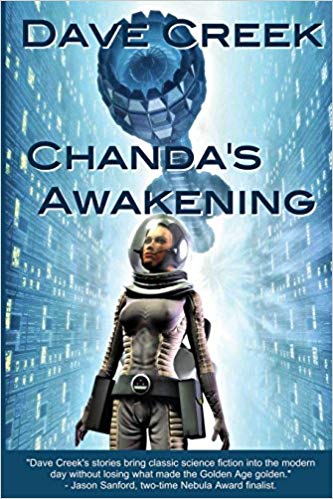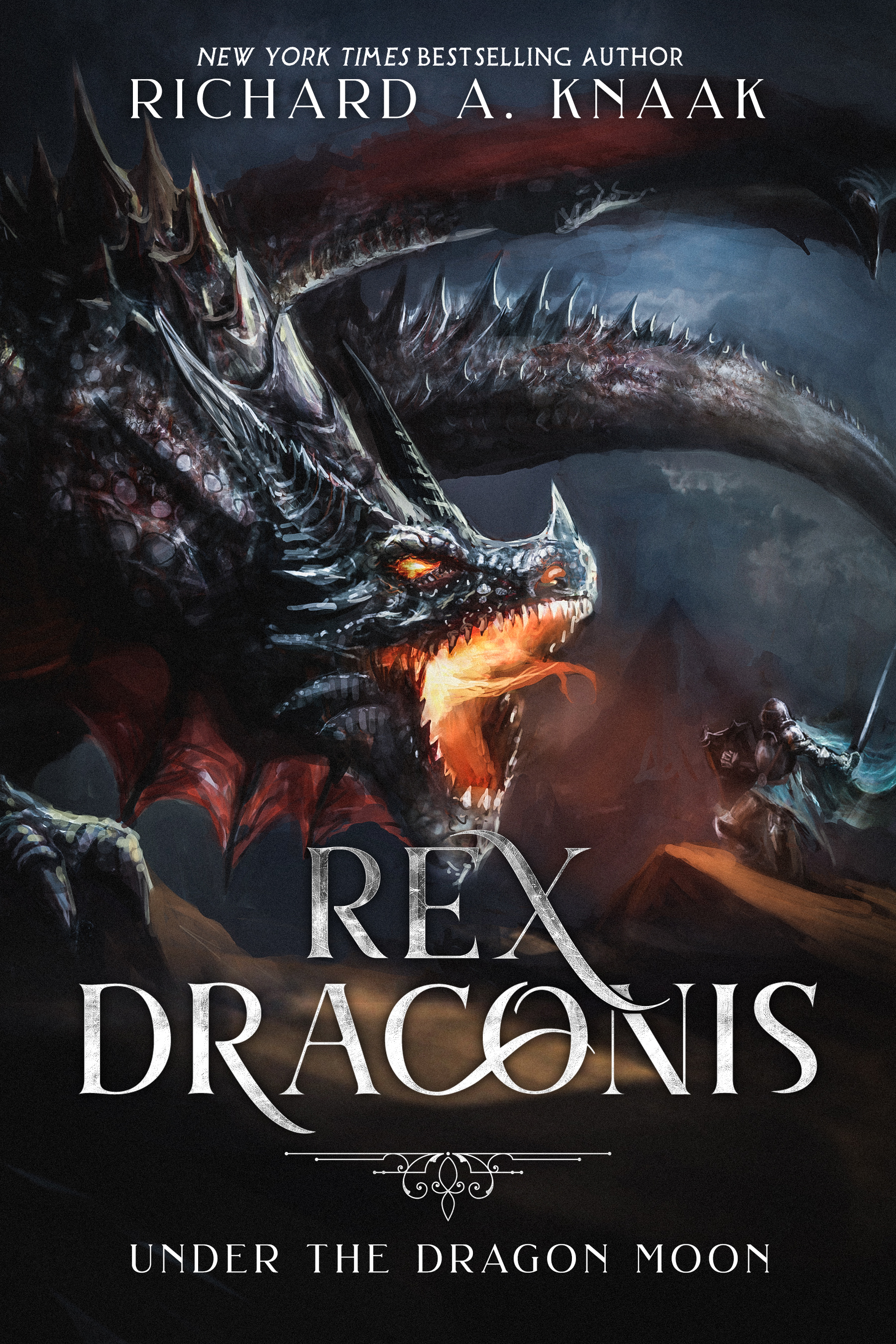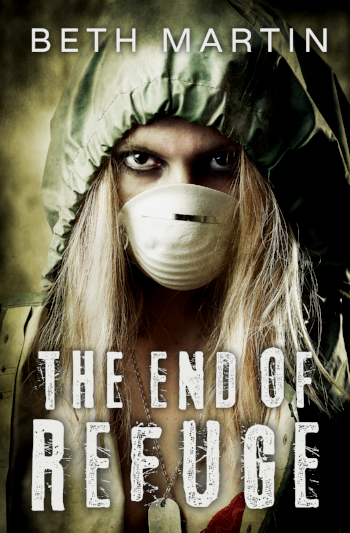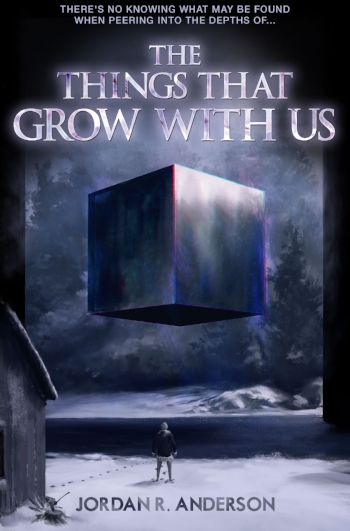This is just a pre-finished sample, but you can enjoy it nonetheless.
Hydra Halloween Horror Sale!
Killstreak: Heavy Armor Excerpt!
Chapter 1
“What do you think?” Estelle held the half-eaten remnants of a peach tart on the end of her fork. She smiled, a strand of her wavy hair dislodging from her ear to dangle in front of her eye. She tucked it back into place with a soft giggle, then popped the last half of the tart into her mouth, savoring the flavor for a few moments.
“It isn’t bad,” Kadorax replied honestly. He snatched another tart, a cherry one, from Estelle’s plate. “I used to eat sweets like these all the time at the office, back on Earth. We’d have donuts almost every single day in the break room.”
Estelle reached across the small table to squeeze his upper arm. “Not here,” she said.
Kadorax flexed under her grip. He toyed with the idea of activating a talent, perhaps something to enhance his reflexes or his Strength, but he knew he didn’t need to. The cords of iron-like muscle beneath his skin were impressive enough as they were. As a level thirty-eight assassin, he’d trained for years to turn his body into the toned machine of war that it was.
“What was your favorite food back home?” he asked.
Estelle thought for a moment as she pushed an errant wisp of pale yellow cream from the side of her lips into her mouth. “I traveled to New York City once when I was a girl. There were so many new foods, things I’d never had before, but the one I remember most—”
“Cheesecake?” Kadorax interrupted, vividly remembering the taste of New York cheesecake filling his mouth.
“Hot dogs,” Estelle corrected with a laugh. “I know it’s stupid, but I loved the street hot dogs from the vendors. The smells, the sounds of the city, they all combined into those hotdogs. I know I was just a little girl, but that’s what I remember the best.”
“Of all the foods in New York, you liked the hot dogs the best?” Finishing the last cherry tart, Kadorax waved his empty ale mug toward the waiter.
“What was your favorite food?” she asked him, her eyes narrowing with a devilish grin.
Kadorax had to think a moment before answering. “Maybe ice cream, but mostly because no one in Agglor has come up with it yet.”
“Oh, come on,” Estelle playfully scoffed. “You sound like a child. Ice cream?”
The waiter stopped by and refilled Kadorax mug from a large pitcher wrapped in a scarlet cloth. They weren’t in one of Agglor’s better restaurants, nothing like one of the fine establishments on the upper tiers of Kingsgate where the nobility were served by hordes of attendants and paid their bills in gold, but it wasn’t a lowly sort of place either. Kadorax nodded to the waiter and took a long drink, enjoying the thick, warm ale as it coursed down his throat.
“Well, if I have to pick something else, perhaps my favorite would be cold beer. Really cold. I don’t mind the warm stuff here, but I’ll buy a thousand kegs for the first man in Agglor to invent refrigeration.” He took another long swig before setting the now half-full mug on the table. Across from his drink, Estelle had a dainty glass—real, clear glass—with a few ounces of sweet white wine left in the bottom.
“Now you sound like a drunken college boy,” she countered.
Kadorax sighed. He had a few pieces of seared fish still left on his plate, though they had gone cold as the conversation had progressed, and he no longer had any temptation to finish his meal. “Well, if I have to pick something more to your liking, Estelle, then a warm, juicy steak it is.”
She smiled, nodding her head. “That’s more like it,” she said. “Though you can get steaks here at almost any inn or tavern, so it doesn’t really count.”
“Not like back home,” Kadorax went on. “Sure, there are a few places in Kingsgate where you can get beef that isn’t cooked beyond recognition, but it still doesn’t compare. And for the record, I think I’d still take a pitcher of ice cold beer over a steak, if I could.”
Estelle finished the last of her wine and leaned back in her chair. “You boys are all the same,” she purred over the rim of her glass.
“How many have you dated?” Kadorax chanced to ask. The beautiful woman’s facial expression hid everything. She was inscrutable, her emotions as masked as any of Kadorax’s Blackened Blades out on a job.
Waving her index finger back and forth in front of her eyes, Estelle looked away toward the corners of the room. “I’ve told you before, my love, that I’m not interested in talking about those things.” She stood from her chair, rubbing a sore spot on her back. “Come, let us talk… more privately… upstairs, shall we?”
Kadorax fetched a small handful of silver from his pocket and set the stack down neatly at the edge of the table. It was more than the meal had been worth by far, but he didn’t particularly care. Estelle brought out his magnanimous side, assuming he actually had one—or maybe that was just what he liked to tell himself. The enchanted dagger at his side served as a constant reminder of his grim business on Agglor.
Estelle led him to the staircase, then reached behind her to take Kadorax’s hand.
“Not yet,” the assassin said, tugging her back. “I can’t go up yet.”
When she frowned, Kadorax shifted his eyes to the man in the lobby of the inn he’d been hired to escort. Estelle didn’t know the nature of Kadorax’s contract, but she understood the less-than-subtle gesture for what it meant. She turned to continue up the stairs, offering him a sly wink and pulling ever so slightly at the edge of her dress to give Kadorax a tantalizing hint of a view as she ascended. “Don’t be too long.”
Trying hard not to blush, Kadorax clenched a fist at his side to take his mind from the dark places Estelle had so effortless lured it. He made his way through the grid of tables to the bar situated across the room and took the stool all the way at the left end so he could casually turn, keeping his eye on his mark as long as he needed to.
The man under Kadorax’s protection was seated at a large circular table toward the center of the room, dining and conversing with two other diplomats whose names Kadorax did not know, nor would he have given them much thought had he ever learned them.
Not wanting to give himself away too blatantly—though it would not matter; all the traveling nobility of Agglor hired protection in some form or another—Kadorax ordered another mug of ale and began to sip at it casually.
The other diplomats’ guards were similarly posted for the evening not too far away across the restaurant. There were three of them, all well trained and older than Kadorax, veterans by the looks of their scars, though not a single one was higher level than the assassin. As the evening droned onward, Kadorax’s armed counterparts behaved in much the same way as he did. They languidly sipped ale, kept their eyes firmly locked on their mark and the door, and no more than one of them at a time ever went out to piss.
The diplomat was agonizingly slow in concluding his business. Hours passed, and Kadorax’s ale remained roughly half full until deep into the night. Finally, gracelessly, the diplomat moved his considerable bulk from his chair. The wood beneath his mass creaked in protest, and then the diplomat was standing and shaking hands, exchanging the final pleasantries of the night with his equally distinguished and rotund guests.
Kadorax waited only a few moments before tossing a copper piece to the bartender and following his mark up the stairs to a long hallway containing a dozen doors all leading to secure rooms. The diplomat was in the seventh room, and he had left the door slightly ajar.
Silently, Kadorax stepped inside and offered a gracious bow. The diplomat was already busy at work unfastening the buttons of his waistcoat, and the garment appeared thankful for the relief. In truth, Kadorax wasn’t sure how the thread had been strong enough to survive the night’s meal without bursting apart. “You are well, my lord?” the assassin asked.
“Bah, my damned feet hurt, my head’s awash with wine, and there’s a fucking piece of gristle stuck between two of my teeth,” the older man announced as he continued to wrestle with his finery, casting the expensive articles to the ground without a hint of care for their value. The entire ensemble, intricately embroidered with gold thread at the sleeves and collar, with still more gold patterned into the back of both the shirt and coat as well, probably cost just as much gold as the entire inn where the man was staying.
Kadorax bit one of the knuckles of his right hand to keep from laughing as the diplomat. “Well, I’m not sure I can help with any of that,” he said, turning back for the hallway. “I’ll be sleeping outside your door, my lord. Any noise before dawn, and I’ll be at your side without hesitation.”
The diplomat returned a meek smile as he collapsed down on the room’s large mattress. “I’ll trudge lightly if I happen to wake before sunrise,” he muttered.
Kadorax was almost out of the room when he remembered to check the window. The single square of glass to the right of the bed wasn’t large enough for a man to sneak through, but it would offer a view of the bed, albeit at a rather extreme angle, for a deft crossbowman to take a shot should the glass be broken. Kadorax inspected it carefully, activating Detect Trap: Rank 5 just to be sure.
Having found nothing out of the ordinary, Kadorax pulled open the door. “Sleep well, my lord. Just call out, and I’ll come rushing.”
“Yes, yes,” the portly man said as he waved him off. His eyes were already closed, and Kadorax suspected the wine was getting to his head a little more than the diplomat had let on.
Once more in the hallway, Kadorax paced to the end of the rooms, stopping at each door to listen for any unusual activity. He liked the way the floorboards creaked under the blue carpet at his feet. Loud floors meant tougher jobs for his ilk, though he didn’t expect any trouble in the first place. The job was a routine one: escort an aging, miserable, overweight diplomat from one city to the next while ensuring no one with a blade came within a dozen feet of him. Kadorax had, as a matter more of principal than anything else, stopped accepting such contracts back when he was only level twenty. Unless a fair amount of combat was expected, the experience yield would simply be too low to excite his interest.
But Estelle had insisted. She had tired of living her life in the bleak halls of Darkarrow, and the escort quest was the only contract with a bit of travel on the board when she had made her plea to Kadorax for a bit of a journey.
When he was confident there were no overt threats lingering behind the other doors of the inn, Kadorax let himself relax a little as he sat down outside the diplomat’s door, his back against cool wood. He scrolled through his list of abilities until he found the several talents he had taken relating to guarding and vigilance, then activated Peerless Resolve: Rank 3. The ability would last twelve hours, allowing him to stay alert—albeit not entirely awake until he earned more ranks—ready to spring into action at the briefest indication of trouble.
Estelle was behind the fourth door to Kadorax’s right, and he positioned himself, dagger in hand behind his back, with his head facing in her direction. He wasn’t worried for her safety since she had no enemies, but he longed to be in her bed. The wooden wall and thin carpet would wreak havoc on his back. He knew he’d awake sore and still tired, not to mention more than a little lonely. Having Estelle so close and yet so far out of reach tugged painfully on his heartstrings. Though he sometimes hated to admit it, Kadorax had fallen in love with her.
With thoughts of Estelle, her body framed in an enticing silk gown—a deep teal, sleeveless dress Kadorax had spent a month’s worth of contracts to purchase—fluttering through his head, the assassin closed his eyes.
*****
Hours after midnight, in the deep, black of pre-dawn, Estelle eased open her door. The hinges had been recently oiled, and they only made small, insignificant sounds as they moved. Walking on her toes, she crept quietly down the hall toward Kadorax’s sleeping form. The man was hunched over, his chin resting against his chest, his dark hair hanging down in unkempt strands on his forehead.
She was lightly clothed, wearing a light nightgown woven from simple cotton that barely fell down far enough to cover even an inch of her upper thighs. Stealing a glance down the other direction of the hallway to ensure no embarrassing encounters with other patrons, she padded along the edge of the carpet where it met the wall. A devious, lusty smile crossed her face when she reached Kadorax without him waking. Mercifully, the floorboards at the edge of the hallway hadn’t made a single noise under her diminutive weight, and her own breathing had been easily lost under the loud snoring coming from the room directly across from Kadorax.
Estelle held her breath as she reached a hand out to Kadorax’s shoulder. She pulled back her touch less than an inch from his shirt. Her loose gown had drifted forward as she’d leaned down, and part of her plan involved Kadorax’s gaze being filled with the most pleasant view she could offer when he awoke. She straightened her back and pulled the gown down, fitting it tight to her breasts. She leaned in once more, confident that her appearance offered no doubt as to her carnal desire, and gently shook the man awake.”
“I—”
Kadorax’s dagger was buried to the hilt in her chest.
Blurb Formatting and Organization
Time for the nuts and bolts of book blurbs.
Pictured above: actual nuts and bolts.
Step 1: Read the blurb content guide.
Step 2: Read the blurbs from your genre's top-selling books. How do you check which books are dominating your genre? Click on your categories on your listing.
For We Are Many, one of my own novels, reached #9 in horror! Woot!
Clicking on the bolded genre: Horror in either line of the "Best Sellers Rank" section will take you to the top 100 in that category.
Step 3: Utilize the Hero Line concept
What the hell is a hero line? Glad you asked. The hero line is the bolded line at the top of a blurb that establishes genre atmosphere—the most important part of the listing.
Firstly, to even make a line bold, you need to go into your Author Central page and click on the book's listing which will allow you to edit the details. You can edit the blurb there. Also, when you add spaces, the software will reject them. Go ahead and add them anyways, then message Amazon through the Author Central contact portal and tell them to add the spaces manually. Why / how a multi-billion dollar corporation like Amazon can't get basic HTML coding to properly display is one of the world's greatest mysteries.
What do you put in the hero line? Cool shit. Snappy lines. Atmosphere. More on that later (with examples!)
Step 4: Add some author bio
Toss a couple lines into the bottom of your blurb about you as an author. And make sure to cram a bunch of keywords into that section. Everything on the blurb factors into Amazon's search algorithms. Example: Bill Writerson, a 2010 Hugo Nominee for best upper thighs, crafts harrowing tales of epic fantasy, weaving all the suspense of a fast-paced thriller into worlds reminiscent of J. R. R. Tolkien, George R. R. Martin, and Dr. Suess.
See how many keywords we slapped down in just a few lines? Goal achieved.
Step 5: Talk about your other books
Why not add a couple lines below the author snippet to mention your other works?
Step 6: Drop a line about your website / newsletter
Yeah, do that.
Step 8: Wonder where step 7 got lost...
Nah, I'm out of steps.
Examples by genre:
Want to know the best blurbs in each genre? Me too. What I've assembled are examples I think are decent in each genre, probably not the best, but I'm not going to sift through 10 million books. Stop being greedy and do some research on your own.
Epic Fantasy: The Goblin Wars Omnibus
Dinosaur Erotica (you didn't think that was a real genre, did you?): Taken by the T-Rex
Horror: Tormented
Sci-fi: The Martian
Romance: I Love You Again (this blurb is too long, but it uses the concept of the hero line quite well. Honestly, it has too much plot and not enough atmosphere)
Thriller / Urban Fantasy: The Victor McCain Collection (specifically, check out the last paragraph. That's how you drop keywords in an author bio snippet)
Postmodern sexual surrealism nightmare fuel (you didn't think that was a genre either? Buckle up.): Razor Wire Pubic Hair (check out the hero line and the author bio snippet—both are perfect, though I would have done them both in bold)
YA Romance: P.S. I Still Love You
Cookbooks: Thug Kitchen
Heavy Metal Cookbooks (by now you should believe every genre I throw out there): Mosh Potatoes
Non-fiction: The Space Barons
August Book Sale! All books priced less than a dollar!
Building the Best Ad Stack
Looking for the best websites to use during a sale?
Updated: April of 2021
Here’s the deal. I’ve moved away from ad stacking quite a bit. I’ve honed in my tried and true list to a barebones few, and that’s barely a “stack” these days. A lot of services don’t have good enough vetting (or they simply promote anyone who pays the fee) which means readers quickly abandon the list. I’ve cut down my person list at the bottom of this page significantly.
The Lists
Check out this list: http://www.paidauthor.com/best-ebook-promotion-sites/
Caveat: There's a lot of speculation about Books Butterfly. The current consensus is typically to avoid them.
And another large list of places: http://www.openworldmag.com/dominate-amazon-bestseller-54-resources-kindle-countdown-promo/
Caveat: Their discussion of Reddit is bad. Don't follow that. Always look at the sidebar rules in every subreddit, read them carefully, and become active before trying to promote.
Here's a great list of the places organized by genre: http://www.creativindie.com/1100-new-places-to-market-your-books/
My Personal List
Bookbub
GenrePulse
Price Dropped Books
Book Runes
EReader News Today
BKnights
Hidden Gems Reviews
My Marketing Articles
The promoters in my personal list aren't ranked in any order or anything like that. Bookbub is the best, and the rest are all of decent effectiveness. Also, if you want the absolute best value for your promotions, most of the sites have their own newsletters. Make a new email address, use it to sign up for all the promotional website newsletters, and then get all the promo codes and coupons that the promo sites send to you, saving you money on each and every promotion!
My official recommendations for pros in the book industry
UPDATED FOR 2024
Looking for professional services to bring your next book project to publication?
Here's a list of the people I've found who do excellent work:
Author Analytics, General Tools, and Data Collection:
I’ve been using ReaderLinks for at least 7 or 8 years now (as of 2024) and cannot recommend it enough! Get all your data in one place, track detailed sales breakdowns, and finally know what promotions work and what is a waste of money. Insanely helpful.
Formatting:
Editing:
The editing from Nef House Publishing is expensive but also the highest quality in the industry that I’ve ever found. If you want the top shelf, go there.
Proofreading:
The editors I mentioned above can proofread just fine, and I have one recommendation for a proofreading grammar specialist. Email A. J. Maruna (ajmaruna@gmail.com) and tell him I sent you. His prices are exceptionally good, and he does excellent work.
Covers:
Jake from JCaleb Design is the absolute best in fantasy and sci-fi.
Brad Lark (blark@blark.com) makes some awesome illustrations. If you’re looking for drawn work (as opposed to photoshop / stock image manipulation), he’s your guy. You can see some of his portfolio here.
Logos, Designs, Book Trailers, and Author Merch (like t-shirts, stickers, things to sell or giveaway at convention booths, etc.):
Brad Lark (blark@blark.com) is the only person I’ve found so far with reasonable rates for shirts and general graphics work. Shoot him an email. You can see some of his portfolio here. And you can check out his full website here: Flying Pork Apparel.
ARC Services:
Email List Management / Sending:
I’ve used a couple different services, and MailerLite is the only one I currently recommend.
Looking for a publisher?
Check out Nef House Publishing.
My own services are back!
After a couple years of focusing elsewhere, I’m back and offering some writer services once more.
Want your service to be featured?
Too bad. I only feature services that I’ve personally used and found to be exemplary. You can’t pay to be on the list. (Alright, well… at a certain number I won’t say no, but you’ll need to at least be paying a few of my mortgage payments before you catch my attention)
What a cheesy picture…
Killstreak Book One: Respawn - An Excerpt
Killstreak Book One: Respawn
Chapter 1
“What do you think?” Lord Kadorax Darkarrow whispered to his sole companion, a thin half-serpent with a scaly head and flat ears.
The bipedal snake-man’s gaze darted around nervously as his tongue licked the air. There were torches on the walls, but most of them had already sputtered out. Ahead, down a stone ledge slick with old moss, a ring of robed humanoid figures stood around an altar. “Five against two,” Syzak hissed. “And none of them are above your level, my lord, not even close.”
Kadorax nodded. “Good. Which one is the strongest?”
Syzak scrutinized the ring of priests once more, using his Detect Strength ability to read their stat sheets. “There,” he pointed with one of his three green fingers, “the one on the left is two levels higher than the others. That one is their leader.”
Again, Kadorax nodded. He was characteristically silent, taking every precaution to hide his presence as thoroughly as he could. As the head of the Blackened Blades, he valued stealth and secrecy above all else.
“Shall I take the leader first, my lord?” Syzak asked. He held a small crystal wand between the three fingers of his left hand, clearly eager to cast a spell and begin the fight.
For a moment, Kadorax called his own stat sheet to his vision, flicking his eyes downward to scroll through the myriad of spells and abilities he had mastered over the last decade. He had spent years training both his mind and body, and now he was the highest-level assassin-mystic hybrid in the entire realm of Agglor. Ever weary of traps, he focused his vision on the Discover Magic spell and viewed the proper casting procedure from his ability sheet. It had been years since he had needed the spell, and it wasn’t one he kept lodged in his brain for quick use.
Kadorax silently mouthed the words to the mundane incantation, having long ago earned the Silent Casting talent, and two areas of his vision lit up with brilliant, translucent color. The first had been expected. The humanoid leader—he still wasn’t positive what the priests actually were—showed a heavy aura of red magic encasing his form, likely a protective ward of some sort. The second area of magic came from a large circular rune inscribed on the wall behind the altar, and Kadorax didn’t know what it meant.
“Can you disable the leader?” the assassin whispered so faintly he could barely be heard.
“Of course,” Syzak answered with a smile.
Kadorax held up a hand. “He has a red aura around him, probably Stone Skin or Magic Armor, perhaps of a rank we have not seen before. Can you break it?”
Syzak’s serpentine eyes inspected the humanoid once more, but only for a few seconds. “I have Strip Enchantment, though it is a costly spell,” he said.
Handing the snake-man a silver shard of reflective metal, Kadorax nodded. “No chances,” he breathed. While most of the spells in Agglor could be cast by having them unlocked and either reading or knowing their incantational phrases, certain extremely powerful abilities required specific components which were sometimes incredibly difficult to obtain.
Kadorax’s Discover Magic casting was about to expire, so he flashed a quick successions of rudimentary hand signals to his companion, and then shimmied over the edge to begin his descent down the nearly sheer rock surface of the temple’s interior wall. His gloves, black silk constructions known as Cat Paws, silently gripped the flat surface beneath his fingers with all the strength of a well-muscled panther. On the temple’s floor, Kadorax melted into the shadows. The place smelled musty and damp, and the flagstones making up the ground were wet with stale rainwater.
Above the assassin’s head, a partially concealed flicker of purple light emanated from Syzak’s wand, shooting across the temple with blinding speed. The magical glob struck the leader in the chest, and Kadorax saw the humanoid’s red aura fade just seconds before his Discover Magic spell wore off, unable to be cast again for several hours.
Kadorax sprinted forward on leather boots as silent as the grave. He reached behind his back and grasped the bone handle of a dagger hidden in a sheath under his cloak. The bone was frigid in his grasp, ice cold even through his gloves, and the blade was so dark it actually dripped a steady stream of viscous shadows onto the stone ground between his strides.
He took the first robed priest in the back before any of them even noticed Kadorax among their ranks. The priest let out a muffled shriek as he crumpled to the ground. When his robe fluttered to the side Kadorax finally saw the head of a jackal underneath, its teeth bared.
Dogheads, Kadorax mused, using the derogatory term for the race. He had killed scores of the jackal-headed beasts throughout the years, and he’d never regret a single strike of his blade.
Another bolt of purple magic sailed over Kadorax toward the doghead leader, catching the jackal fully in the chest. At once, a rigid shell of stone grew up from the temple floor to encase the beast, locking it in place in a dark, constricting prison that was as terrifying as it was effective.
Kadorax didn’t waste any time. He spun from target to target, whirling his black blade between the two nearest living enemies and rending them to bloodied bits.
While his compatriots were dying, the final jackal had run a few steps backward and drawn a small crossbow from underneath his dark robe. The weapon clicked and thrummed, and the steel bolt held in its track sprang forward.
Kadorax quickly whispered the words to Shield Maw, and a fiery dragon’s head sprang to life in front of his body to consume the incoming missile. He didn’t need to use such flashy magic—his Expert Reflexes would have easily moved him out of the way quickly enough to dodge the bolt—but he hated doghead scum. He wanted the remaining jackal to fear him, to contemplate its own death before he gutted it, and the dramatic spell certainly did the trick.
The jackal only spent a few heartbeats trying to reload its crossbow before it gave up and turned to run. Kadorax chased after it, clearing the distance almost instantly and sinking his dagger into the fur-covered doghead. The creature shuddered, but it did not die. It slumped to the ground and mewled, its bounty of experience points flashing in yellow just above its head. Kadorax stepped over, letting the congealed shadows surrounding his blade drip onto the doghead’s chest. The shadows themselves were harmless, but the psychological impact they had on a dying foe was certainly palpable.
“P—”
Kadorax stomped down on the creature’s throat, silencing it before it could speak a single intelligible syllable.
With a faint rumble, the experience Kadorax gained from the swift battle sifted into his body, adding to his already staggering total. He brought up his sheet again to check his progress toward the next level, but he knew more or less what it would be. The jackals hadn’t been worth much. He was still more than fifty percent away from level seventy-three. His next talent, Exceptional Void Strike – Execution: Rank 7, was still frustratingly far away. He would have to kill hundreds of dogheads to even make a dent in the total.
Then a rumbling from behind snapped Kadorax’s thoughts back to the present, and he dismissed his stat sheet with a thought. The leader was still alive, and he was finally breaking free of Syzak’s stone prison.
Seeing his eviscerated companions, the jackal’s eyes went wide, but he was still quick on his hairy feet. The jackal rolled left behind the stone altar, drawing a slender sword from his robe and rolling his wrist with practiced ease. Kadorax had never learned the Detect Strength ability, but he could tell the jackal leader was far beyond the mere underlings lying dead around the altar. Repeating the words to his most frequently used spell, Kadorax felt the familiar rush of adrenaline brought on by Slaughtering Surge filling his veins. He sprang forward with lightning speed, twirling his lightless dagger downward for a quick killing blow, and met the jackal’s adept parry with a ring of steel.
Flurry of Strikes pumped through Kadorax body, moving his right arm as quickly as it could physically go, putting on a dazzling display of violence made possible only by the assassin’s maxed out Agility stat. Shockingly, the jackal matched his relentless pace.
The jackal leader ducked his shoulder and used a talent, Armor Break by the look of the yellow sheen on his weapon, charging forward with power akin to a stone giant fueling his legs.
Kadorax staggered backward. It was the first time in over two years his Strength had been matched, and the sheer surprise of it broke his concentration for a split second. The jackal was relentless. The creature’s slender blade came in from every angle, slashing at Kadorax’s face over and over again.
Growling with sadistic pleasure born from a true challenge, Kadorax summoned his character sheet to the corner of his vision and searched for Pull from the Void, repeating the order of the required words several times in his mind before attempting to cast the spell. When he finally let it loose, a shadowy hand of pure magic erupted from his chest and sailed toward the hidden ledge where Syzak waited. The small snake-man latched onto the hand and rode it back down, flinging a rapid barrage of lightning and fire from his wand all the while.
Some of Syzak’s magical bolts managed to hit their target, but the jackal leader wasn’t particularly fazed. His red aura returned, now visible without magically enhanced vision, and it absorbed the energy of the magical assault almost fully. Kadorax had never seen the defensive enchantment before, and he had seen almost everything, or so he had thought.
Working quickly as he cast, Syzak brought forth a Wall of Frost in the narrow gap between Kadorax’s boots and the jackal’s furry paws. The shaman augmented the spell with another talent activation, one Kadorax had only seen him use a few times, and the wall that erupted from the ground reached far over either combatant’s head. Kadorax scampered backward to catch his breath and scour his character sheet for an answer.
“He’s fast,” Syzak hissed, keeping his wand ready and a spell at the front of his mind.
Kadorax didn’t waste his breath on a response. The jackal was quicker than any opponent he had fought before, and he needed something unexpected, something obscure, to turn the tide.
“The wall will not hold much longer,” Syzak said. “Should we flee?”
“Eldritch Fire!” Kadorax yelled as he completed the spell. A burst of blueish-black flame licked out from the end of his dagger toward the ice wall. A quick activation of Perfect Timing let him flawlessly judge the expiration of Syzak’s conjuring. Snapping his wrist forward, a burst of black fire cascaded through the falling, dissipating ice, and fully engulfed the howling jackal.
Kadorax lunged forward with his blade, shielding his eyes from the painful mixture of fire and ice raining down on his shoulders. At rank ten, the highest available to any spell, Kadorax’s Eldritch Fire was nothing short of a cataclysmic conflagration—and it worked. The jackal only avoided part of the blast with his Improved Reflexes. His mangy hair danced with flames, and the jackal howled as he spun through the temple, slapping at the licking flames in vain.
“Coup de Grâce!” Kadorax yelled, activating his Assassin’s Superior Talent with a brilliant flourish. His blade danced in his hands, flinging thick globs of shadow to every corner of the room, and the burning jackal could only offer a meager attempt at a parry. In a blur of speed, Kadorax appeared to the jackal’s left, then his right, and finally he was behind the beast with his black dagger held high above the creature’s spine. He drove it downward with all his strength.
The jackal leader’s experience flashed in yellow above his head as he died. The formidable foe had been worth just over three thousand experience, and that brought Kadorax noticeably closer to level seventy-three, though he was still roughly thirty-five percent from leveling again.
Sweat poured down Kadorax’s head. Next to him, Syzak tucked his wand back into his belt. “Where’s the loot?” the snake-man asked. He nudged the jackal leader’s corpse with his boot, pushing aside the front of the robe to inspect the body for treasure. He found nothing.
“Use Detect Hidden, Syzak,” Kadorax panted, thoroughly exhausted. Part of why he had risen to be Agglor’s highest-level assassin had been his choice of battles. He never fought more than one heavy encounter in a day, and he preferred to only test himself once a week if he could, being as frugal as possible with his rewards specifically to allow himself the most meaningful respites. Due to his style, he hadn’t taken many of the endurance-related talents, so he had no way of reducing his recovery time with magic.
Syzak uttered the words to the simple spell. “Oh, shit,” he said almost at once.
Kadorax skipped backward on the balls of his feet, dagger at the ready and chest heaving from exertion, scanning the temple for some new threat he had not seen.
“The inscription,” Syzak explained, pointing to the magical symbols behind the altar. “There’s a door. The jackals were summoning something, not imprisoning it…”
As if on cue, the wall behind the altar shook forcefully. Something was breaking through it with heavy fists. Something massive and beyond powerful. Something unknown. Something.
“Lord Kadorax, I feel it unwise to remain here,” Syzak implored, his serpentine eyes full of terror.
“We haven’t gotten any loot yet,” Kadorax growled. He scanned through his list of abilities, quickly reorganizing them so that his unused spells and talents appeared at the top of his character sheet. “Whatever it is, it’s guarding the treasure. We stay.”
A few bricks fell out of the wall, and Syzak glimpsed something dark—and enormous—pounding away at the stone on the other side. “Kad! We can come back later!” he screamed. The snake-man turned to run, but Kadorax caught him by the arm.
“We’ve defeated worse,” Kadorax reminded him.
“Have we?”
The wall crumbled inward.
A giant, horned head emerged from the rubble, quickly followed by four muscled arms, each the size of tree trunks. The thing roared, and then it wrenched the rest of its body free, coming to its full height in the high-ceilinged temple.
Lord Kadorax Darkarrow felt his heart catch in his chest. He had fought dragons on several occasions and lived to tell the tales, but those encounters had always been with dozens of other high-level adventurers. With only a single shaman at his side, powerful as they were together, he knew he was outclassed.
The beast, whatever it truly was, stood over twenty feet tall. Its skin looked like rock, but it flowed and moved with such ease that Kadorax knew it was organic—some sort of hardened carapace—and its head was covered in a circular pattern of bulging black eyes that reminded the assassin of a scorpion. It had four arms, each vaguely humanoid and rippling with muscle beneath its thick armor, though it did not wield any weapons in the traditional sense.
“W-what is it?” Kadorax stammered. He tried to access the dungeon boss’ character sheet, but all he saw was a series of question marks highlighted in deep crimson floating near the top of his vision.
Before either hero could speak, the boss reared its hideous head. “I am your undoing!” it announced with all the strength of a world-ending earthquake.
Kadorax flew through his list of abilities to find the one that would take him and Syzak farthest from the temple in the least amount of time. “Teleport!” he yelled, grabbing his companion with both arms to ensure they traveled together.
Nothing happened.
The four-armed beast laughed, its voice so loud the Kadorax had to cover his ears to keep the pain at bay.
“Teleport!” the assassin tried again. Still, his feet remained firmly planted on the temple’s stone floor.
“Shadow Step!”
Nothing.
“Fade!”
Nothing.
Kadorax flew through his list of mystic abilities, searching for something that might work in the boss encounter. He settled on Smoke Leap, a low-level ability designed to vault him upward and forward by about thirty feet while leaving behind a decoy made of smoke, but the ability did not function properly. Something blocked it.
“You cannot run, puny human,” the massive boss taunted. “No one can escape their own grave.”
Kadorax had encountered enemies in the past with similar magic-preventing abilities. Typically, the dampening field was generated by an enchanted ring or amulet worn by the user, but the towering beast featured nothing of the sort.
“Slaughtering Surge!” Kadorax finally yelled, bringing a fresh wave of adrenaline to his arms and legs.
Syzak summoned forth a shell of protective energy around the assassin, and then a burst of brilliant light shot from the snake-man’s wand. The spell landed on the boss’ head, but it did not have the intended effect of blinding the creature. In fact, it didn’t appear to have any effect whatsoever.
When Kadorax reached the horned beast, it was ready for him. Arm after heavy arm came hammering down into the temple floor like boulders dislodged in a landslide. Each strike was enough to turn Kadorax into dust, and his Expert Reflexes were all that kept him alive. Swerving between the arms, the assassin brought his dripping blade of shadows in with all the strength he had left in his body, slashing furiously at the creature’s exoskeleton covering its segmented right leg.
Kadorax’s blade clicked loudly off the boss’ armor. From his position between the beast’s legs, he could just barely see into the room from where the horned thing had emerged, and it was full to the ceiling with treasure—more than the assassin had ever seen before. Piles of glittering gold shone in the torchlight, and iron-banded chests were stacked in neat rows as far in as he could see.
Breaking his greed-fueled reverie, a huge hand swept Kadorax up from the ground, crushing all the air from his lungs. On the ground, Syzak used every ounce of obscure arcane knowledge he had to rain blow after blow on the creature, though none of them had any visible effect. Even spells like Void Prison, an incredibly high-level magical assault designed to immobilize even the most magic-immune foes, simply did not succeed.
The boss brought Kadorax up to its huge maw. “I am your undoing, human!” it yelled. Its breath smelled rotten and old, like the beast had been chained in its prison for hundreds of years with nothing but dead adventurers to fill its belly.
Kadorax saw a hint of yellow coming down from the top of his vision. It was his experience total—the amount the boss was about to claim for itself. “I’ll see you at the spawn, my friend,” the assassin called to Syzak, his voice shaking.
The snake-man nodded. “In the next life,” he answered. “In the next life…”
Laughing all the while, the dungeon boss squeezed. It didn’t need to activate any ability, and it didn’t even bother to watch. In an instant, Kadorax’s chest caved in on his organs, squishing the life from his body like a bug caught beneath the hoof of a horse.
Want more? Order your copy of the full novel today!
Epic Fantasy Giveaways!
Some new giveaways to get you through the Spring rains! Click on the covers you like the best, enter to win, and get reading!
Understanding AMS ads
So you want to run some Amazon ads?
Step One: Understanding the terms
ACoS = this is the critical term when understanding an ad's performance. It means Average Cost of Sale. That means how much you're spending on each sale via clicks. The lower this number is, the better.
CPC = this stands for Cost per Click which means how much you're paying for each click on your ad. You want this to be somewhat low, but high CPC has benefits which we'll address later.
Step Two: Understand your goals
Your total goal should be to get an ACoS of roughly 70% or lower. That means you should be at least breaking even on each sale. You also want to gain new readers for your brand and for your series. More about that later.
Step Three: Which books to promote?
Market the first book of your series as much as possible. Make fans on book 1 and money on books 2+.
Step Four: Pricing
The lower your book is priced, the more sales you're likely to get. But, you lose on royalties. So you'll need to find what works best for you. Marketing a 99 cent book probably won't get you to a good ACoS. Marketing a higher priced book probably will get a decent ACoS, but it'll be slower which means it takes longer to add to your fan base. You need to pick, test, and then make an educated decision. Don't let anyone tell you how to do it.
Step Five: Setting a daily budget
Don't think the daily budget means what you spend. It means what you could spend. And if no one clicks your ads, you won't spend anything. So set a high daily budget. Your budget should be higher than you would honestly feel comfortable spending. The higher your daily budget, the more Amazon will attempt to spend, which means getting free impressions. That's a good thing.
Step Six: Setting a cost per keyword
The average cost per keyword is changing frequently, though usually around 50 - 80 cents these days. Set the majority of your keywords around there too. If you have a keyword you particularly like, set it higher. Amazon will show you the average for each keyword, and sticking around there is recommended. At the end of the day, increasing your bids will simply accelerate your ad by gathering more impressions and, in theory, more clicks.
2020 Pricing Update: AMS has changed a lot since this article was published in 2018. I recommend using the ‘suggested’ price per click generated by Amazon. If you’re feeling confident, enable the dynamic bid up option. And I basically always use dynamic bidding down because why not? No reason to not check that box that I can think of.
Step Six and a Half: Which kind of ads to make?
(2020 update) Honestly, you can try all 3. General consensus in the community seems to be that ‘sponsored product’ is still the best. Lock screen ads are a new feature, but most authors I talk to don’t like them. Everyone hates ads on their Kindle for good reason, and the majority of your clicks are bound to come by accident as people simply touch their device. For all my personal ads, I only use sponsored product.
Step Seven: Pick your keywords
Arguably the toughest part. Search Amazon slowly. What that means is you need to type your genre into the search bar... slowly. Watch what else comes up. Those are similar search terms which people are entering. Target that stuff, even if it doesn't seem terribly relevant. Go to the bestseller list for your genre. Find the top 100 books, and use every single author and every single book title. Then use every single common misspelling of all those search terms. Then add things from other media forms which might be related to your book. You write sci-fi? Include the Star Wars movies and whatnot in your keywords. You write erotica? Add in the sex toys people search. In all honesty, you can never have too many keywords, but anything under 200 is too few.
Or...
You can use KDP Rocket. I don't get anything for promoting them, but I endorse the hell out of their wonderful product. Their software takes what I just described above, an hour or two worth of work, and does it for you in 30 seconds. Running ads without rocket is like building a lego where you have to carve all the blocks from wood before you start.
A few bonus notes on keywords (2020 update): Honestly, there are no irrelevant keywords. AMS is kind of like darts—you could make a horrible throw and by some grace of luck hit the bullseye. I once made an AMS for a historical samurai / portal fantasy novel and used a shotgun approach to keywords like I’m describing here. The best performer (with an ACoS around 20%) was Frankenstein, as in the Marry Shelley novel. Obviously, the two books are unrelated. So why did the keyword work for a samurai portal fantasy? I can’t say for sure, but my bet is that the majority of people searching for Frankenstein on Amazon are buying it for a school assignment, either high school or college. They also are likely to read (hence buying a book), and that age demographic is likely to enjoy both fantasy and samurai stuff / Japanese culture / anime. What’s the conclusion? Don’t delete a keyword until you know it is a bad one. And having unrelated keywords won’t hurt you (much) either since they’re unlikely to gather any clicks, and you only pay with each click.
Step Eight: Manage
Check your ad every 4 - 6 days. Checking more often than that is likely not too useful as their reporting data is slow to update. Every 5 days, go in and look at each keyword's performance. Pause the keywords with high clicks and no sales. Increase the bid on keywords with good ACoS. Start compiling a list of your own which is a compilation of all the keywords which have been winners for you so you can add them to every single ad you make.
2020 managing update: It will take more time to set up, but the more efficient way to test a bunch of keywords is by making lots and lots of individual ads with the same daily budget and only a handful of keywords. Putting them all in the same ad (say 1000+ keywords) might mean that keywords 600 - 1000 never get impressions because stuff higher up the list (in bid value) eat up each day’s budget limit. Just something to think about. Either set a high daily limit or make lots of smaller ads.
Step Nine: Ad Copy
Ok, this should be higher in the priority, but screw it. How do you write killer ad copy? Start by reading some. Search your book or similar books on Amazon. Read the ads they display. Do any work for you? Emulate those. Do any suck? Figure out why. The best ad is short, snappy, and packed with genre-specific atmosphere.
Example of good ad copy: Fast-paced dungeon adventure. Can an accountant from 2017 survive being trapped in a medieval video game?
Why does that work? It tells the reader exactly what they want to read. They probably searched LitRPG or GameLit or Ready Player One looking for more books in that genre. The ad copy above gets right to the point and tells the reader he just found some new LitRPG.
Example of bad ad copy: Bill's an accountant. He loves video games. Then he ends up in one when he accidentally accesses the game's code. Will he live?
Why is it bad? The genre expectations are flimsy and come late in the copy. That’s bad. Also, mentioning a character by name is off-putting in something so short as ad copy. It just doesn’t entice the reader at all.
The general rule of ad copy: plot is bad, feeling and atmosphere are good. Tell them what genre you have, then let the cover image do the heavy lifting and make the sale.
Step Ten: Testing
Let your ads run as long as you can afford to let them run. And if your ad gets to 70% ACoS or lower, let it run until that number changes for the worse. How many ads should you run? As many as you can afford. Here's a good method to manage them:
Ad A is for book 1 of the series with keywords based on authors X, Y, and Z with ad copy "square"
Ad B is for book 1 of the series with keywords based on authors W, J, and L with ad copy "square"
Ad C is for book 1 of the series with keywords based on authors D, E, and F with ad copy "square"
Ad D is for book 1 of the series with keywords based on authors X, Y, and Z with ad copy "circle"
Ad E is for book 1 of the series with keywords based on authors W, J, and L with ad copy "circle"
Ad F is for book 1 of the series with keywords based on authors D, E, and F with ad copy "circle"
Ad G is for your series boxset with keywords based on authors X, Y, and Z with ad copy "square"
... You get the idea. Or you should.
In each ad, only change 1 variable. That's how you get to know if a keyword is truly good or not. Does it work with only 1 ad copy and not the other? That's fine. That's what you need to learn to wean out the bad keywords and the bad ad copy. And don’t be afraid to test a lot. It might take 20+ tried before you nail your ad copy. Dig in for the long haul.
Step 11: Interpreting Results
Low impressions = not enough keywords / bids are too low
Low clicks (generally) = not the right keywords or not the right ad copy (because you’re getting in front of lots of eyes, just not the right eyes.)
High impressions and low clicks = bad cover or bad ad copy (because something isn’t drawing them in from the ad; could also be the wrong keywords)
High impressions, high clicks, low sales = bad landing page, bad cover, bad blurb, or bad writing (uh oh) — luckily, my marketing series has guides to help you fix your landing page. Start with the blurb. Once you know that isn’t the issue, I would get input from other writers on the cover. If that doesn’t turn out to be the issue, you might need either more editing or a different book altogether. Sadly, not everything will sell no matter how polished it is.
High impressions, high clicks, high sales = congrats, you win!
Step Twelve: What next?
If you're reading this, you're either an indie author / marketeer, very confused, or somehow tricked into thinking this article is a fun short story about a bear becoming friends with a jeweler's daughter just to convince her to marry him and then leave her at the altar because you're a bear and she's a woman and it would have never worked out but dear god did you love that quirky human and now you'll miss her for decades and decades until Christopher Robin comes to rescue you but then he turns out to be a poacher in disguise and now you can never trust anything or anyone ever again.
No matter which category you fall into, here's what you should do next. Go buy an indie book. Read it. Leave an honest review. Seriously. You'll make someone's day, and you might just find out that indie authors have been churning out nuggets of quality for quite some time. Don't know where to find an indie book? Browse Amazon until you find a book ranked higher than 1 million. That book isn't selling. Be the fine chap who brings the poor book ranking back to 500k for a day or 2. Just imagine all the joy you'll cause, then go back to your whiskey, you booze-addled love-lost polar bear. I know your tricks. Don't think I don't...
An author's guide to firearms, bullets, and body armor.
So you write about guns, do you?
Here's a breakdown of the very basics so you don't need to spend a few hours and a hundred bucks at the local range test firing a myriad of weapons to get the bad guy just right.
Terms
Semi-automatic: pull the trigger and it shoots. Pull it again and it shoots again. No need to do anything between trigger pulls. Most modern handguns are semi-automatic, and almost all non-hunting rifles made after 1940 are semi-automatic.
Automatic: hold the trigger down and it fires until empty. Military weapons are typically automatic. It is illegal (well, sort of) for civilians to own automatics, plus they are incredibly expensive.
Single Action: typically refers to revolvers. This means you need to manually reset the hammer between each shot.
Double Action: typically refers to revolvers. This means each trigger pull (after the first) will reset the hammer for you.
Clip: a device used (frequently in antiques) to quickly load rounds into a magazine. The clip is then often removed from the weapon. Also, clips must be prepared ahead of time.
These are clips for rifles.
Magazine: think of how most action movies portray reloading a handgun. That's usually a magazine. A magazine holds all the rounds and delivers them to the firearm without any other equipment. They differ from clips because they are placed into the firearm and kept there during shooting, not removed. Most modern (non-revolvers) firearms use magazines.
Bullet: this technically only refers to the shooty bit at the end of a round or cartridge. In the above picture of a clip, the bullets are the copper bits at the top of each round. They’re often far smaller than most non-shooters expect them to be.
Round: the entire projectile and case make up the round. The round has a brass (or steel, especially in older ammo or Eastern European ammo) case, a primer, gunpowder, and a bullet.
Primer: this is the bit that makes the explosion which sends the bullet down the barrel. They are usually not waterproof. They sit in the "primer pocket" and are struck by the firing pin when the trigger is pulled.
Gunpowder: not much to say other than it smells a bit like sulfur when fired. Before fired, powder smells very sweet, almost like sugar, but with a specific hint of some indescribable "gun" scent. Gunpowder is also very easily acquired at most gun stores and just about all nature / camping style places. It is cheap, and it comes in a wide variety of styles designed for various purposes and rounds.
Which guns you want for which scenes:
Hunting: depends on the target. For turkey, you usually use a small shotgun. A .410 works well for birds of most sizes. For larger game, you want a larger round. Things which shoot 7.62x39 (AK47, SKS, specifically chambered ARs, many others) are good for deer and things that size. Simply look up guns marketed to the kind of hunter you’re writing and use that.
Hunting exotic game: You probably want something big. A 375 H&H is a pretty damn enormous gun which can take down just about every animal on the planet. The recoil is a monster, and the noise is absolutely deafening. Even with ear protection and a trained shooter, you'll feel it in your ears and shoulder after 2 or 3 shots. Also, keep in mind that many exotic game hunters keep large revolvers with them as well. Wild boar (and other animals) are very dangerous.
Killing humans: Almost anything will do the trick if the bullet hits something important. Remember: the brain itself is not an instant "kill shot" as the movies portray. The neck and lower brain contain the parts necessary for survival. Just look up Phineas Gage if you want to see how useless the upper parts of the brain sometimes are. We'll work our way from smallest to largest on how various common guns hitting flesh might deal their damage.
.22 rifle or handgun: think about a pellet gun, just a little stronger. This is the kind of gun old-timey dads gave to their children to hunt tin cans on the roof. At a distance of more than 50 feet, accuracy becomes a huge issue, and heavy clothing can even stop the rounds. Not much penetration against skin and fat tissue, and you'd have to be either very close or very lucky to get a kill. Recoil is non-existent. Sound is minimal.
9mm handgun or carbine: accuracy is the biggest issue. From more than 50 feet (or 20 if untrained), getting a hit with the average 9mm handgun becomes at least a little tricky. One good hit center of mass should at least stop most humans, though would probably be non-fatal. Recoil is minimal. Not terribly loud to shoot without ear protection, though it wouldn't feel good.
.45ACP handgun (or rarely rifle) is a common choice for law enforcement and government work. The round is large with decent stopping power, very similar to the .38spl below. Recoil is pretty noticeable. Noise is certainly an issue.
.38spl handgun (or rarely rifle): this is starting to get to a bigger round. Handgun accuracy is still a pretty big issue, especially for the untrained. Against a person, expect a .38 round to be pretty devastating. Any center of mass shot should have stopping power, and lethality is certainly possible on a single hit. Recoil, especially on a small revolver (which is a common choice), is extreme. Snub nose revolvers chambered in .38spl are a common choice for personal defense, and they also shoot a good amount of flame out the barrel. Don’t think about it for a stealth mission as the noise will be high.
.357 Magnum: this is the big boy of handgun rounds. At 50 feet or closer, you're going to blow a good hole in someone's chest. The recoil, depending on the size and weight of the gun, is very high, making rapid shots with any accuracy very difficult. For an untrained shooter, a .357 Magnum is simply too much gun to handle well. The sound without hearing protection is deafening.
.223 Remington / 5.56x45: this is the standard AR15 round. The bullet is small, but it has lots of powder and shoots very quickly. Rifles shooting .223 Remington are typically very accurate (depending on skill, of course) even for untrained shooters. The recoil isn't even noticeable, and the noise is very minimal too. Kids can shoot ARs without much issue. Hitting humans can be lethal at certain ranges. One issue is that a close range shot will often produce a through and through wound, creating a small hole in the target which actually carries very little stopping power.
7.62x39: this is the standard round for the AK47 and SKS, as well as many other rifles common to the Middle East, Europe, and South America. AR15s can also be chambered in 7.62x39 (by replacing the "upper" which is the bolt carrier group and barrel. The gun will then need to be zeroed again for accuracy. It takes no tools to change an upper. Just push out 2 pins, swap the upper, then push the pins back in with your hand.) which makes them better for military applications than their standard .223 chambering. The 7.62 packs a lot more stopping power, and with that comes noise and recoil, though both are not terrible to the untrained shooter.
.308: the standard of medium - large game hunting, this will pack a big punch in a human. Most .308 rounds will go through barriers like car doors and basic walls without much trouble. Many sniper rifles use .308, and even an untrained shooter should be accurate with such a rifle out to a good distance, perhaps 100 feet or more. The recoil on rifles shooting .308 is noticeable, but not bad by any means. The noise level is pretty rough without hearing protection.
7.62x54mmR: this is the big brother round to the 7.62x39. The classic rifle chambered in 7.62x54 is the Mosin Nagant, an antique battle rifle developed in the late 1800s and used widely for 50+ years. These guns are still easily available in the United States, and they're common to gun collectors because they are cheap to buy and fun to shoot. The rounds will penetrate most barriers and most low to mid tier armor as well. Many modern hunting rifles are also chambered in 7.62x54, and the stopping power against a human would be more than enough. A person hit by a Mosin Nagant would be seriously injured, assuming they live at all. The recoil is extreme to an untrained shooter, and the noise is deafening to pretty much everyone. Holding it kind of feels like a pirate cannon, and firing it certainly feels like a blunderbuss.
.30-06: The largest round easily purchased at gun stores. These are typically reserved for large game hunting, and they pack a serious punch. You'll kill almost anything you hit with it, and firing a .30-06 (pronounced: thirty aught six) without hearing protection is a horrible idea. Buckle up for a rather extreme shooting experience if you’re new to the world of guns.
.50BMG: the BMG stands for Browning Machine Gun as this is the round fired from fox holes and concrete bunkers to turn humans to dust and vehicles to rubble. It should be noted that these rounds are expensive and hard to come by as most stores don't carry them since the demand is very low. There is also a variant of the .50BMG called .50 Beowulf which can be fired from a specifically chambered AR15. Uppers designed for .50 Beowulf are very expensive and rare. Needless to say, an untrained shooter should probably stay away, and firing it without hearing protection is wretched.
Some common mistakes
Whether in books or movies, guns are rarely done correctly. Here are some frequent mistakes you should avoid.
Reloading: look up how many rounds fit inside the gun you're writing. For starters, a Glock 19 (common choice handgun) holds a total of 15 rounds of 9mm. An AR15 holds 30 rounds of .223 Remington, and most .308 rifles hold either 1 at a time or a maximum of 5.
Noise when wielding: Lifting / aiming a gun makes no noise. Movies just butcher it. Whenever a bad guy levels a gun at a cop, it always makes a ton of noise. In reality, there aren't any moving parts, so it should be silent.
Weight: guns are heavier than most non-shooters expect. A trained shooter can usually tell when a gun is loaded or not depending on the weight.
Accuracy: Untrained shooters are garbage with handguns. Untrained shooters are decent with rifles. No one can shoot a snub-nose revolver too well after 30 feet, and no one can shoot a musket at more than 10 feet with any accuracy.
Reloading / manufacturing ammunition: these are 2 different processes. Someone who reloads spent brass (common) is doing something far easier than someone manufacturing ammunition (very uncommon).
Reloading ammunition: this involves many stages. Here's the process: clean the fired brass. Use a small rod in the reloading press to punch out the spent primer. Reshape the brass using a dye. Insert a new primer into the brass using a handheld tool. Measure the correct powder charge and get it into the brass using a funnel. Use a different dye on the reloading press to seat the bullet into the brass. If you’re going to write a scene with reloading, watch some YouTube tutorials first to get it right.
Manufacturing ammunition: don't believe The Walking Dead. Making rounds from scratch is nearly impossible. The hard parts will be crafting the primer and the gunpowder. Crafting the bullet is easier with a crucible and random metals with a hot enough flame. A fair amount of reloaders also forge their own bullets, but I’ve yet to meet a single person actually manufacturing ammunition.
Shooting guns indoors: firing any weapon indoors creates a noise issue. Especially for rifles and shotguns, shooting indoors without hearing protection will be painful.
Hitting a moving target: even for trained shooters (cops and soldiers, not special forces) it can be very difficult, especially with a handgun. Look up some of the records for shooting out there. The highest trained snipers in the world still have trouble with moving targets at long enough ranges.
Precision: average rifles with store-bought ammunition are not the most precise guns. They're accurate, but you won't put 2 shots through the same hole on the target without some luck. If your character needs precision, have him load his own brass with specialty gunpowder and specialty bullets, using detailed instruments and measures. You can find all sorts of videos out there detailing rounds and reloading recipes specific to accuracy.
Optics: most scopes don't magnify that much like they do in movies. Also, whenever a scope is attached or unattached, the gun needs to be "zeroed" to ensure accuracy. If your character keeps a disassembled rifle in a briefcase in their trunk, the gun will be somewhat accurate, but not perfect until they take it to a range and spend some time dialing it in on a paper target.
Body Armor
There are different levels of body armor, and the diagram above explains what they're designed to stop. Remember: kevlar body armor doesn't make bullets bounce off of you like nothing happened. Kevlar turns what would normally be a lethal or crippling shot into what you can survive with minimal injury. The shot will still hurt (depending on the round), and it will probably knock you to the ground.
Check out this article for a detailed look at the types, styles, applications, and prices of various body armor.
For the basics: a cop will probably have Level II or Level IIIA armor. That should protect against most handguns (especially at range) and the smallest of rifle rounds. To protect against a rifle round, you need a plate carrier which would be Level III and above. Soldiers deployed to active combat zones are given plate carriers. They are totally legal for civilians to own, relatively easy to buy (though expensive), and heavy to wear.
Win some awesome books!
Check out the awesome titles below! All you need to do for a chance to win is click on the cover, then enter the giveaway. Winners will be selected at the end of the month!
Happy Reading!
A ton of new fantasy and sci-fi releases!
IT by Stephen King - Analysis by Horror Author Ashley Holzmann
A guest author on the blog! Welcome Ashley Holzmann!
Ashley Holzmann
There’s a plethora of variety within the horror genre. The goal is to insight tension, fear, or anxiety within the consumer of the medium. The paths to achieving that goal vary wildly.
The horror community at large cannot even agree with itself on what is and is not scary. Horror is subjective; and that’s a good thing, because all stories are interpreted differently by the person hearing or reading or watching the story.
That’s a big part of what I want to talk about here. How we consume horror and how the same story can be told in more than one way. I also want to touch on the nature of fear, the current audiences for horror, and use the new release of IT in movie theaters across the country as a platform for my wild spiel.
This is an analysis of storytelling above all else. It could very well be a discussion of any genre. But Halloween is approaching and I have, myself, recently release a book within the genre, so why not use this as an opportunity?
The New Movie
I recently went to see the new release of IT in theaters, and while the movie had its flaws, it accomplished what it set out to do: convey fear.
We are lucky that there are three versions of this story out in the world: the recent film, the mini-series adaptation, and the original book the former are based on. By comparing the three, I hope to bring a few thematic aspects of the stories to light, and discuss the successes and shortfalls of attempting to apply those themes to a story.
Summaries of IT can be found throughout the internet. IT and the creator—Stephen King—is so imbedded within society that I won’t explain much of the plot here. The premise, for the uninitiated, is that a group of kids growing up in the suburbs begin realizing there is a creature trying to kill them, and the creature feeds off of their fear.
To be clear upfront, I enjoyed the new film. It is not perfect, but it had to balance a lot of various realities: a direct adaptation of the book was not an option; the new movie had to live up to rose-colored expectations comparing it to the Tim Curry mini-series adaptation; the modern horror audience had to be factored into all of the decisions for the new film.
The movie is also adapting the source material from a book that is so long that its audiobook spans nearly forty-five hours. If you half a half-hour commute to work and you want to listen to IT on audiobook, it will take you a month and a half. Boiling that down to two-isa hours is no easy task.
There is a complicated balancing act when adapting a story, and I personally feel like the writers, directors, producer, actors and everyone else involved did their best to balance all of these factors in the new movie.
In many ways, all creative works are reinterpretations of ageless stories. The Heroes Journey is a timeless trope that still invigorates us. The Coming of Age tale is repeated annually throughout all of our media. The list of archetypes for story structure is not as long or varied as it appears to be when you walk through a book store or scan streaming video services.
What matters is the way a story is told. What aspects are concentrated on. What is thrown away. How the characters interact—characters that are, themselves, often common archetypes.
A Flaw Of Horror
For the new adaptation of IT, I’d like to address the modern horror-going audience upfront. Today’s horror audiences are conditioned to one type of horror scenario: the jump scare. Jump scares for days.
It’s a familiar set up and execution. The music in the film will tell you exactly when something is coming, leading the audience to anticipate the moment. The music then cuts low, and the jump scare moment manifests with a spike in sound effects. Everyone is surprised briefly, and this is repeated over and over again.
Most horror aficionados are not fans of this tactic. It is cheap and easy to do with a premise that’s sloppily put together. Most horror movies these days aren’t actually very scary. They are just peppered with jump scares.
The new movie adaptation for IT is no different. The disappointing aspect of the jump scares in this movie is that the movie would have been amazing without the jump scares. Because the premise, itself, is absolutely horrifying.
I’m not saying that IT gets a pass on this, but it had to balance the source material with a modern adaptation. And modern horror movies have to do one thing to be successful in today’s market: have jump scares.
I personally believe that IT raking in the box office that it did is because it towed the line on the jump scare. Would it have been justified in leaving the jump scares out? Yes. Absolutely. Would it have been as commercially viable? Hard to say.
It would have been a superior film, but it may not have fared as well with mass audiences. The jump scare was used often, because the movie wanted to appeal to the masses. I understand that, and it is what it is. But the source material from the book is the gold that gave the new movie the ability to use jump scares on top of an amazing concept, which was executed really well.
Characters
With that out of the way, there were other things this movie had to factor in. The original book had a number of sexual encounters between children that wouldn’t have translated well to film. The script had to tackle half of a massive book, which meant that characters and plot lines would have to be cut in such a way as to not also detract from the overall story and themes. And artistic limitations were abound. Deciding to set the new movie in the 1980s made sense, because the 1950s references in the book would be a hard sell for modern audiences, who wouldn’t understand as many 50s references as 80s references.
This article isn’t just about criticism, though. The new movie does many things right. The child actors are amazing. They are spectacularly well casted and allowed the freedom to move around in the story. They are given a lot of time to bond, and while some are developed more than others, it was in the service to the run time and it makes sense.
The only shortfall I found in the acting for the movie was with the antagonist, Pennywise, played by Bill Skarsgård. Many people are comparing his performance with the original Tim Curry performance and also Heath Ledger’s Joker.
This isn’t fair. Mostly because Pennywise simply has little room to perform. Most of his moments are under thirty seconds, and he’s given one monologue in the film. You could argue that there are two monologues, but that’s a shortfall from the amount of dialogue opportunities that Heath Ledger had in The Dark Knight.
Ledger was given multiple opportunities to verbalize the character of The Joker, and The Dark Knight absolutely benefitted from that.
Bill Skarsgård wasn’t given the same freedom. Did he demonstrate the potential? Absolutely. But most of his interactions with the characters were jump scares, drooling looks, and one-liners. CGI also played a hindering role, in my opinion.
His introduction is done very well, though, and he really explodes onto the screen when given the opportunity.
Bringing it back to the kids, there were several brilliant moments that the movie took with them.
Allowing Beverly to deal with her period was done both tactfully and in a way that conveyed empathy. Of equal importance was allowing the kids to talk as kids do when adults aren’t around.
This is minor, but makes a huge impact on the audience because everyone viewing is able to immerse themselves just a little more. Kids swearing is relatable. The more the audience buys into the story and characters, the more they are able to suspend disbelief and also feel fear when the characters are in scary situations.
Allowing some of the racial moments from the book was also important. The new movie does this better than the mini-series did.
The book makes the racial tension a large part of the story, and to great effect. The new movie would have benefitted from bravely incorporating this more, but I can understand that the filmmakers wanted to concentrate on a few themes. The missing children being one of the larger concentrations of the movie, and the relationship between the kids, Beverly, and the bullies of the town.
Why does this matter to storytelling, though?
Because a story that is grounded in various aspects of human nature is a story that will speak to the audience. Surface level stories achieve little. Stories that allow subtext and strive to include deeper meanings are the stories that last.
Stephen King wrote IT decades ago, and the story the book conveys is still relevant. Partially because of the characters, but also because of the subtext and themes. That is why Beverly’s period matters, and the racially charged moments matter. Because those are themes worth discussing.
In the context of horror, these themes ground the story to make it more than just a tale of a creepy clown. It becomes a story about being a kid, growing up around racism, reaching puberty, and friendship among the plethora of other themes repeated through the book and subsequent screen adaptations.
At the center of all of this were the characters.
Why Is IT Scary?
IT is scary for a variety of reasons.
I want to look at all three iterations of the story for this section.
The original book was set in the 50s and played off of the children’s fears of the monsters of the era. There were mummies and werewolves and lepers and other monsters.
The mini-series was able to incorporate a lot of this, but also had something amazing on its side: the performance of Tim Curry.
Something the new movie lacks that the mini-series had in spades was the variety in the character of Pennywise. Tim Curry was given the chance to be funny as often as he was allowed to be scary.
There’s something unsettling underneath a performance that allows people to see both humor and horror from the same character.
What IT really provides in all of the iterations is diversity throughout the experience. It’s a coming-of-age story, in the middle of racially charged suburbia, where deviant sexual encounters are common and a creature that can represent anyone’s darkest fears is targeting children. That’s a lot of layers to what makes IT scary. Add to that the cosmic elements, and the disconnect between the children and the adults, and IT is easily one of the most diverse examples of the genre to exist.
Most stories stick to one or two themes to repeat the horror of the story alive. IT goes for broke.
This pays off in a lot of ways when it comes to the book, because there’s something inside those pages that will reach almost every horror consumer.
The screen adaptations don’t have the benefit of dozens of hours, so they have to stick to a few of the themes.
Consuming Horror Alone
IT was very popular when it was published. There were scenes that buzzed and got people talking a lot.
Stephen King was hailed for being fearless. And for good reason.
He put in a lot of sexual deviance, as well as violence against children in that book. Some of this has already been discussed.
It was his love story to Lovecraft, too, who had so influenced him as a child. Stephen King is a huge reason for the recent resurgence in interest with Lovecraft.
The fearless aspect of the book wasn’t King’s ode to Lovecraft though. It was the aforementioned scenes of deviance.
I’m labeling it was deviance here as a catch-all, but that encompasses a variety of moments in the book. From children masturbating, sexual encounters, to first time kisses, and even inappropriate relationships between father and daughter.
This resonated with people who read the book and drew them in. Again, this book is massive and comes with whole segments that were not translated into the screen adaptations.
I believe the reason is deeper than trying to argue that audiences wouldn’t accept such scenes on a screen.
We consume books intimately and are far more accepting of books as a source material. If it’s on a page, we aren’t announcing to the world exactly what words we’re reading.
A book is consumed alone. And when left by ourselves we are very willing to explore our more deviant sides. We do embarrassing things, think embarrassing thoughts, and we often later experience cognitive dissonance when confronted with anyone publicly expressing the same thoughts we’ve had ourselves. We would rather those thoughts be kept within.
This is one of the reasons IT is so effective as a book. It really plays off of countless fears. As I’ve already mentioned, IT is not just a story about an unknown creature, it’s a story about the fears of our childhoods, the lack of adult intervention, and the depths children will go in the direction of cruelty. IT is all of those things.
But it works because of the way IT is written and consumed. Much like 50 Shades of Grey works better on the page (ask anyone who was a fan of the books). There are levels of deviance that we have difficulty enjoying in groups.
Watching a movie in a theater with a group of friends and strangers is inherently more social and more announcing. You are announcing to a portion of the world that you are experiencing this moment in the movie, and everyone around you knows you’re experiencing it.
I couldn’t imagine watching a perfect adaptation of the book in the same room with my parents. I think most people would rather not think of such possibilities.
But if my parents knew I read the book. That’s different.
It is for this reason that I believe the decisions to exclude certain elements were very crucial in the film. Every decision felt planned in the case of the recent film.
The decision to set it in the 80s was cool and retro.
The 80s retro stuff is hot right now. Stranger Things, Ready Player One, Rick and Morty being a tongue in cheek riff on Doc and Marty from Back to the Future.
It felt like the decisions to make changes were artistic/creative decisions and not just for the sake of watering down the story. So I can admire the new movie for that. The way the sets were designed, the actor’s blocking—the movie did a really good job. And while the jump scares were innumerable, I still found myself enjoying the experience.
I'm looking forward to the next one.
Story And Writing
How does all of this relate to the craft? I’ve discussed how important I feel the decisions of the book and the screen adaptations were. How the way characters interact is significant.
There’s a lot to learn from the story of IT. I truly believe that the story is made all there powerful because the audience is actually invested in the decisions of the characters, and believe that this movie does an excellent job. The book does an even better job. The older mini-series does a better job during the first half than in the second half.
Another significant thing that King often does well is his characters stay true to themselves. A curious character makes curious decisions. A scared character is consistently scared. He often incorporates character arcs, but the arcs don’t always play out the way we believe they will. Even when they don’t, the characters stay true to themselves above all other things.
A lot could be said with that. When movies of all genre are released even today and characters make irrational decisions for the sake of the plot instead of the sake of the characters, that says a lot. IT does not have trouble with this.
Character dynamic is huge in IT, as well, and I’ve touched on it. Stranger Things has been recently cited as being inspired by the book IT, and Stephen King is known for being able to produce the relationships that children have without adults really well—Stand By Me is another great example of a film adaptation that plays off of this gift that King has.
When it comes to writing, the best thing to do is allow characters to make decisions that make sense. Human nature is normally consistent. Is that disappointing sometimes? Yes. But it’s easier for an audience to immerse in a story if the characters in the story are scared.
It’s harder to care about characters who get naked and take a shower when a serial killer is on the loose. Instead, everyone says phrases like, “oh, come on.”
That simply isn’t something a person would do. They’d do anything else besides that.
For me, the biggest thing to take away from the new movie, and of course the book, is that there is diversity to a genre. There are no limits. Stephen King is often referenced as a horror author, but he writes in many genres. Whatever a story needs is how he approaches it.
IT is no different. There are really touching moments of childhood innocence that ground the story. The kids in the story are amazingly well balanced as a group. Then there are scenes of gore and horrific moments of over-the-top murder. It gets wild.
And at the center of it all is a goofy clown that wants to eat the protagonists. If you really try to simplify the story of IT, it can come off sounding pretty silly. Really, the best way to experience it is to simply read the book. Deep dive into a story that will truly affect you.
For my fellow writers out there, if you haven’t read the book, I would like to really encourage you to. Not everyone clicks with it, but most people do. And if you walk away from it with criticisms, that’s not a bad thing. It’s an achievement, regardless of any of our opinions.
When it comes to being creative, there aren’t rules. There are just people out there who say there are rules. Ignore those people.
Working with professional editors
My friend edits books. I pay her. She's professional, right?
Probably not.
Just because someone edits books for money doesn't necessarily make them professional. And yes, I know that just getting paid technically elevates one from the amateur to the pro status level, but that's not what this article is about.
The difference between someone who edits full time and someone who edits as their side gig:
- Part time editors are typically very cheap (in comparison) as they need a high volume of clients to build their name and portfolio. For the part time author, that might work out just fine. But for serious writers looking to replace their day job income, we need to look elsewhere.
- I've read dozens and dozens of stories of part time editors missing deadlines, returning less than ideal quality of work, and ghosting clients altogether. That's obviously unacceptable.
So a full time pro editor won't do that?
Nope.
Here's the difference I see more often than anything:
- Working with a full time editor means your project is how they pay their bills. That means your work gets done, and it gets done on time and with a high standard of quality the first time.
- Life can't "get in the way" for a full time editor like it does so often with part time editors. I've read countless stories of people saying things like, "my editor took 6 weeks to return my book, and I found 22 typos in it! Help!" or "my editor got sick for 2 weeks and can't work on my project, who should I send it to now?"
- Full time editors certainly have things come up in life. Death in the family, tattoo got infected, lost all their teeth in an MMA fight, whatever it might be, but that doesn't slow them down for weeks and weeks like it typically does to a part time editor. That's the main concept I've seen a lot of entry-tier writers getting confused. If you want quality work done on a professional timeline with no random delays and a 0% chance of ghosting, you have to go with someone professional. Also, the quality should just be better. But that's a topic for another day.
A video on eBook marketing. Learn your basics.
Some guidance when editing
A COUPLE WORDS ON EDITING
A two part series on editing and working with an editor.
Part 1: The debate between 'track changes' and comments.
Alright, so if you've worked with multiple editors, you've probably seen multiple styles. The first pro editor I ever worked with used track changes. The manuscript was trash (my first novel. It was honestly horrid.) so there were just thousands and thousands of corrections. The editor used track changes, which gives you a quick option to simply 'accept' the edit or not. You click a button and the edit is made exactly how the editor made it on the manuscript, then you move on. For my first manuscript, one riddled with errors, I spent about 2 days applying the edits. I read most of the changes before I clicked 'accept' on about 99% of them. Long story short, the novel still sucks.
Using comments: you've seen the little comment bubbles next to a manuscript. Google Docs and MS Word both support the exact same format. My second professional editor used comments, and that's all I will accept from an editor now. Let me tell you why.
Comments taught me how to be a better writer.
When I used track changes, I just sort of mindlessly hit 'accept' on almost everything. Then when I wrote my next book, I made all the same errors again. The same damn errors.
When I read comments from my editor, I have to read the whole comment to understand what the issue is with the sentence. Then I have to read the sentence I had written to figure out where / what the error is. Then I have to make the correction myself and delete the comment. It takes far longer to do, and that's great. When I see the 4th comment correcting the same comma error, for example only using a comma before a coordinating conjunction if the following clause is independent, I learn how to write correctly. Now I don't make that mistake in my manuscripts. Well, ok, I make it every now and then, but not often.
Learning how to be a better writer is the #1 most important thing you can gain from working with a pro editor.
Part 2: A couple pet peeves I see in a lot of indie writing.
You might recall an article I wrote a long time ago regarding the word 'this.'
Here's an expansion of my thoughts from that article. Consider the following sentences:
1. She laughed at all this and walked on.
2. They fell into his trap. He had planned this to happen just the way it did.
3. They crested the hill by the lake. Now he had them in his sights.
4. Sixteen penguins pecked savagely at the helpless hunter. He tried to defend himself from this, but it didn't work.
5. Trump and Obama finally found the lost WMD in the cave they were currently exploring.
We'll take these sentence one at a time. It should also be said that I made all of them up off the top of my head. Obviously. They're terrible. I would never write that garbage into a book. Well, maybe something close to #4, but that's it.
Sentence 1: If you're a good storyteller, the reader should know why she is laughing. She knows Hillary just lost the election. You mentioned the TV in the previous line, right? Saying "at all this" is just redundant. We know why she's laughing! A better line 1: "She laughed, turning her back to walk on." - Still not wonderful, but you get the idea. Don't tell the reader everything. Tell them just enough.
Sentence 2: You don't want to say: "He had planned the trap" or anything like that because "trap" would be repetitive. As it stands, "this" is redundant with "his trap" in the previous sentence. You have a couple options with sentence 2. Perhaps try something like: "He had planned everything flawlessly." You get the idea. We already know about the trap, so don't tell us about the trap again.
Sentence 3: A little deviation from 'this' commentary. Time stamps. Unless you just finished with a memory / flash back / flash forward / something else similar, you don't need to time stamp events. Of course it is happening currently, I'm reading it currently! Just cut the time word 'now' and you have a better sentence.
Sentence 4: Another instance where 'this' (plus 'from') could be cut to drastically improve the writing quality. I'm not going to point fingers, but I saw that exact construction in an indie horror novel I read recently.
Sentence 5: Another redundant time expression. Unless you have the story being told by Sarah Palin as a memory of that spelunking expedition she did with Trump and Obama, it doesn't make sense. Just remove the time expression and you improve the sentence. And yes, I read something almost identical to #5 not too long ago. Different characters though. Sadly...
Hopefully everything here makes sense. Oh, and do a quick Ctrl+F search on 'this.' You won't find it outside being specifically called out. You can write good fiction—and non-fiction—without using the word.
Check out a pretty cool Youtube interview!
Big thanks for Marc Laton!
Blood and Ash - Map Reveal!
The Chronicles of Estria Book One: Blood and Ash - Coming this fall!
Here's the map!
NaNoWriMo Tips and Tricks!
NaNoWriMo 2017 Report - April Summer Camp!
April 2017 marks my 4th (likely) successful NaNo attempt. As of 4/24/17, I am sitting at 42,117 words written of my 50,000 word goal. Overall, I've tried the NaNo contest 5 times now, and I've only lost once. From what I know of most other authors, winning comes scarce and an overwhelming majority of writers fail before they get too far off the ground. So here I plan on breaking down the useful tips and tricks I've developed to ensure my own writing goes along smoothly.
Firstly, here's a look at my chart:
The First Takeaway = I knew I wouldn't have time to write the first weekend of NaNo this year. I had an appellate brief for the KY Supreme Court due that Monday in law school and obviously, that takes precedent over NaNo. One of the keys to staying ahead of the graph is to plan ahead. I knew the weekend would ruin my progress, so I made sure to bust out 9,000 words on day 1. How did I write so much? Well, I have a pretty boring social life... and I outlined before I began writing!! That's a huge step. Don't just sit down and expect literature to fly from your fingers like wine from a golden fountain. That isn't going to happen. Instead, just plan ahead and make a decent outline before you get ready to rock and roll.
The Second Takeaway = I've never had a good cabin. These guys tend to chat a bit which is fun, but they don't write. Competition motivates me far more than it should, and my cabin provided none this year. No one is even close. Some good advice might be to get writers you know to make your own cabin to hold each other accountable.
The Third Takeaway = Even if you get behind, getting ahead isn't that difficult. So many people I've talked to have said they missed a day or a weekend upfront and then quit. Well.. that doesn't work. Look how many days I ended below my goal line? There's a bunch. But guess what? Just going 400 - 600 words over your daily target the next day and the day after that does wonders to make up that lost ground. If you persevere, you'll make up the words.
The Fourth Takeaway = This one is key. I heard a vital piece of advice a couple years ago that has helped my writing tremendously.
"The best way to find the time to sit down and write a novel is to throw your cell phone in the ocean."
That is so true. This is going to sound super obvious and perhaps even a little childish, but removing distractions is the best thing you can do for yourself and your book. Seriously. I leave my phone on the kitchen table when I head into my office to write. But—this comes with a caveat. If you sit down at the trusty keys and nothing flows out for you, don't stare blankly at the screen for 2 hours doing nothing. Give it a solid 15 minutes. If the magic isn't happening by then, just stop. Sitting and brewing on your frustration just makes you hate your novel. That isn't conducive to writing the next best-seller. Come back in an hour or 2 after you hit writer's block and see if things flow better then. Still not feeling it? Go edit one of your chapters. Try to sneak a couple hundred words in while you edit to get the creative juices flowing. Then if it works, it works. If not? Go to bed and tackle it the next day.
The Fifth Takeaway = Here's some advice which has probably doubled my writing speed. Don't stop your day's writing session at the end of a chapter. Never do it that way. Always stop in the middle of a chapter. Think of it like this - if you stop reading mid-chapter on your favorite book, you're going to come back and open the pages pretty soon to finish that chapter. If you stop at a natural conclusion, there's a good chance you never pick up the book again because it isn't on your mind. The same holds true for writing. If you stop a session in the midst of an epic combat scene, you're going to sit down to write again in an hour or 2 and crank out another 2k words. Multiple 1k+ writing sessions per day is the key to NaNoWriMo. Don't try to write 2k every single time you sit at the keyboard. Write in small chunks, but write more often. And always, end your session at an interesting part!
I hope you enjoyed my lessons learned by 5 trips through the National Novel Writing Month gauntlet. If you have advice of your own, leave it in the comments below. Like this post? Sign up for the newsletter to never miss a single one.


